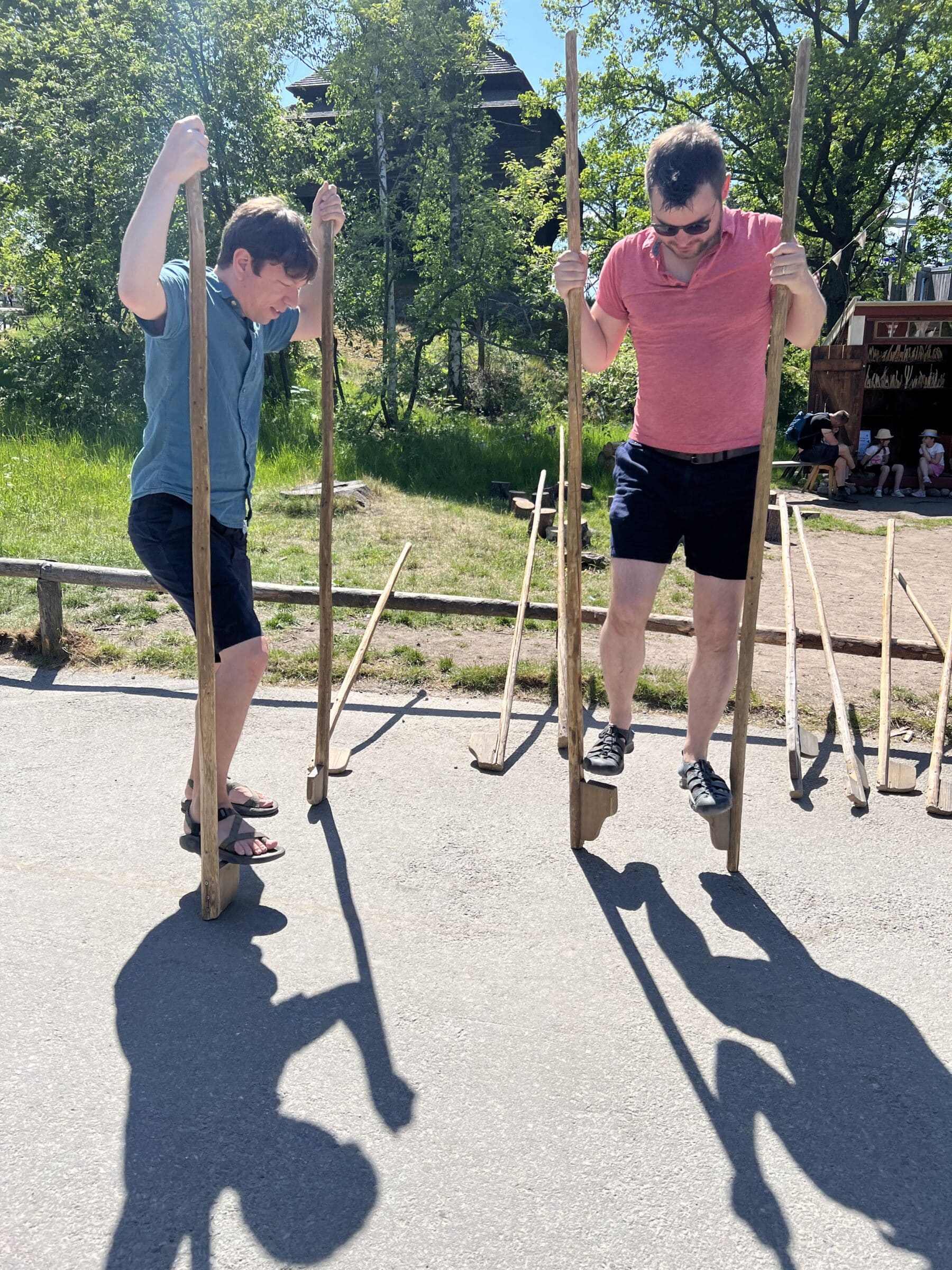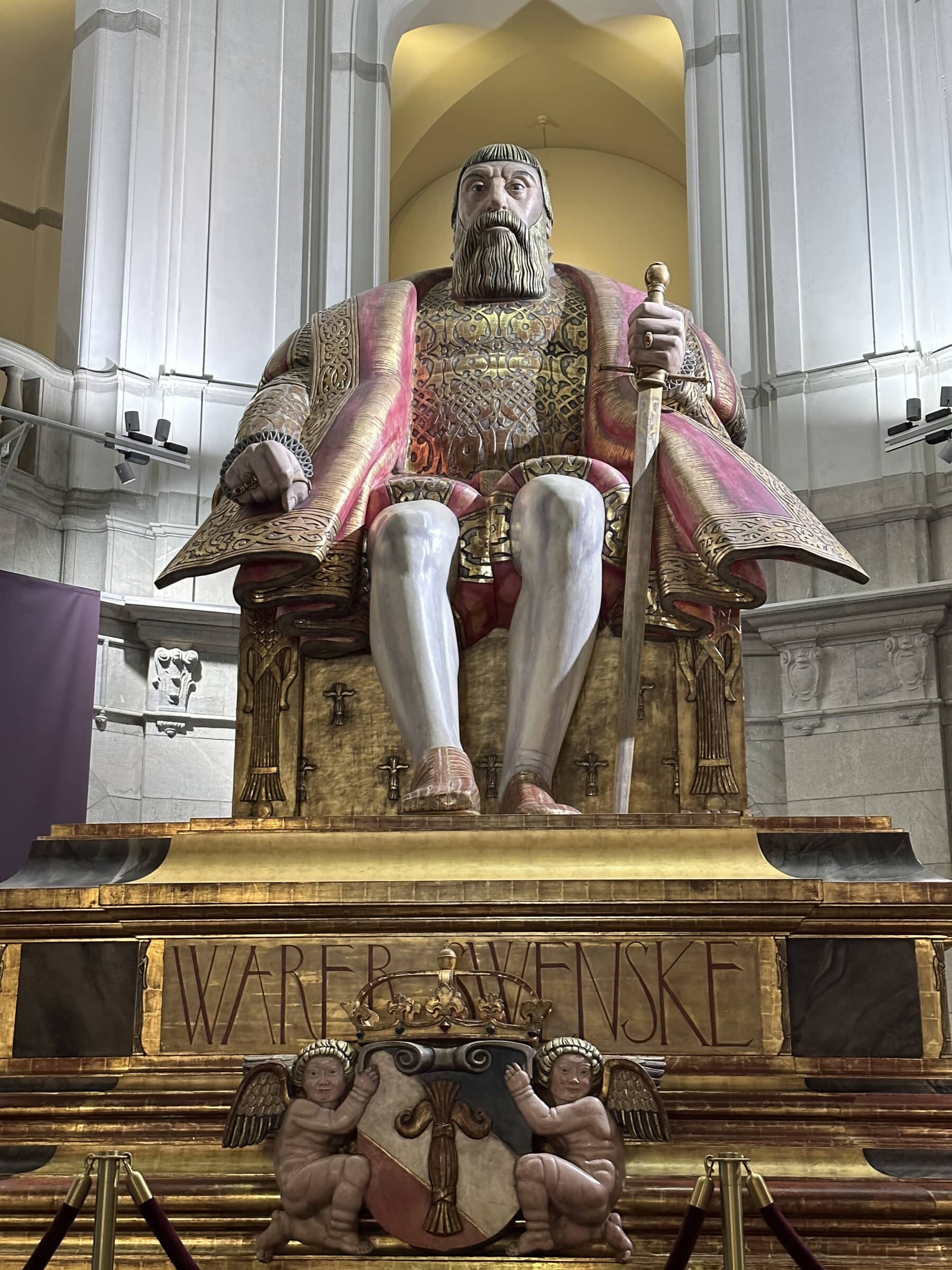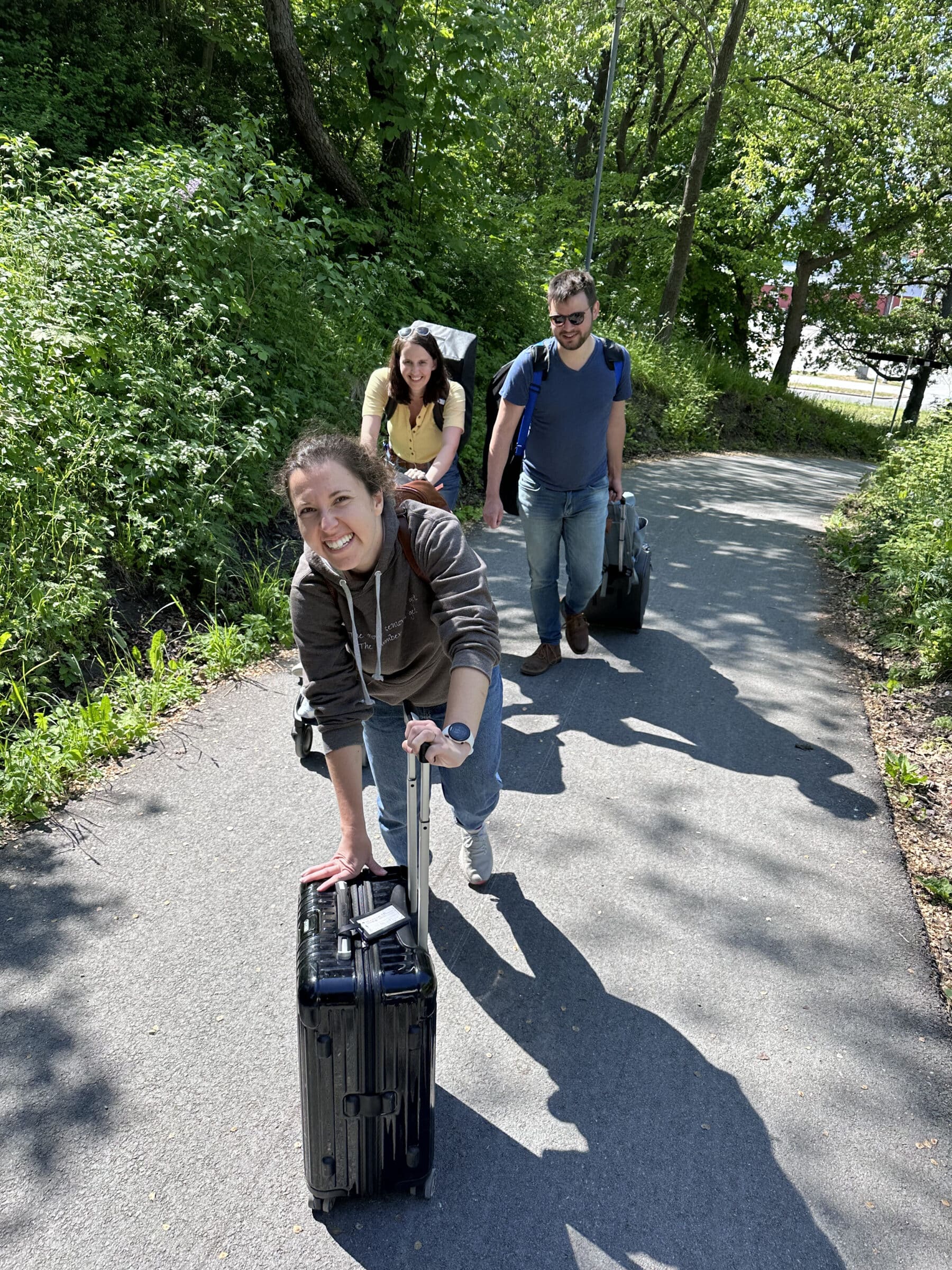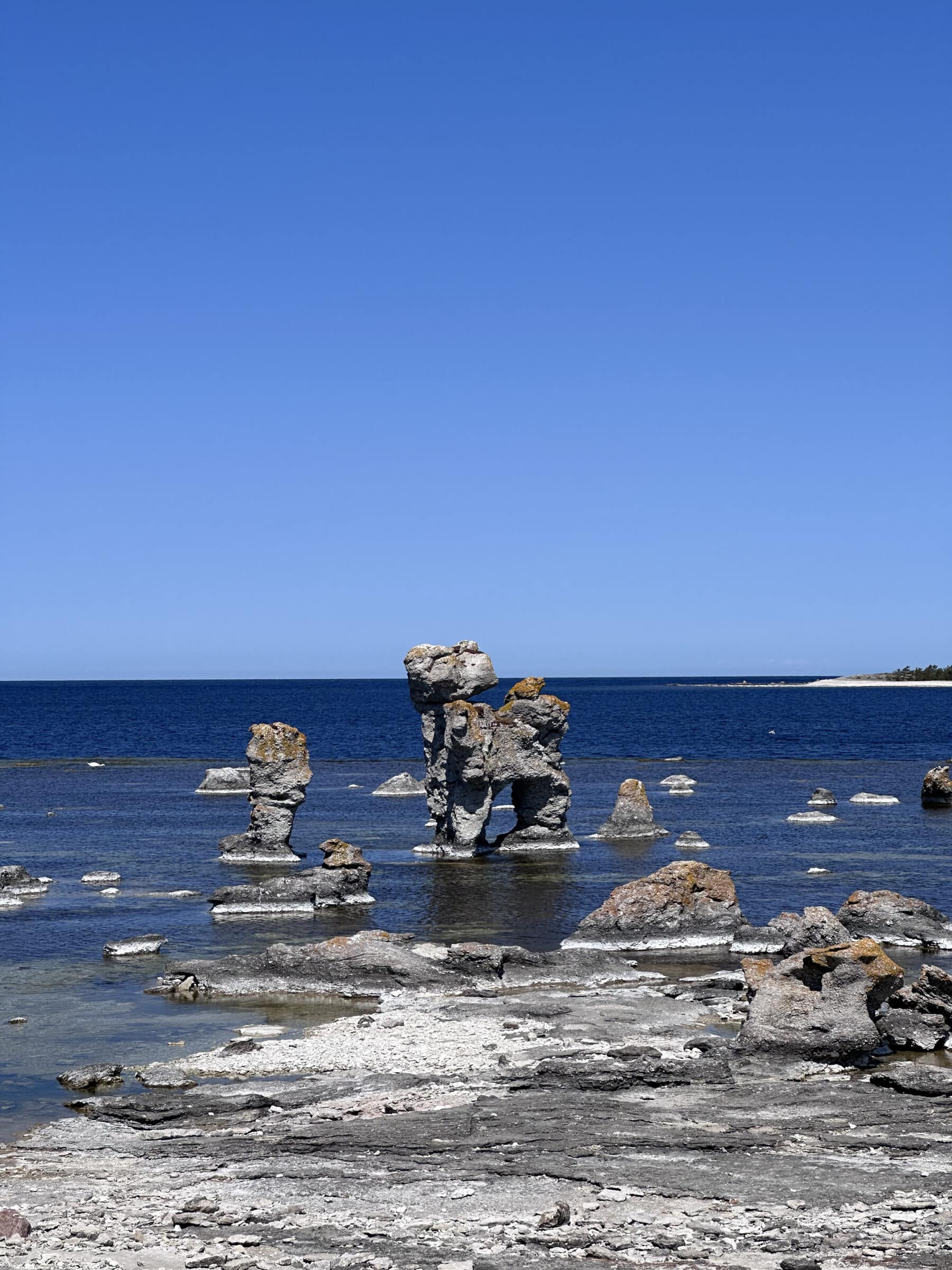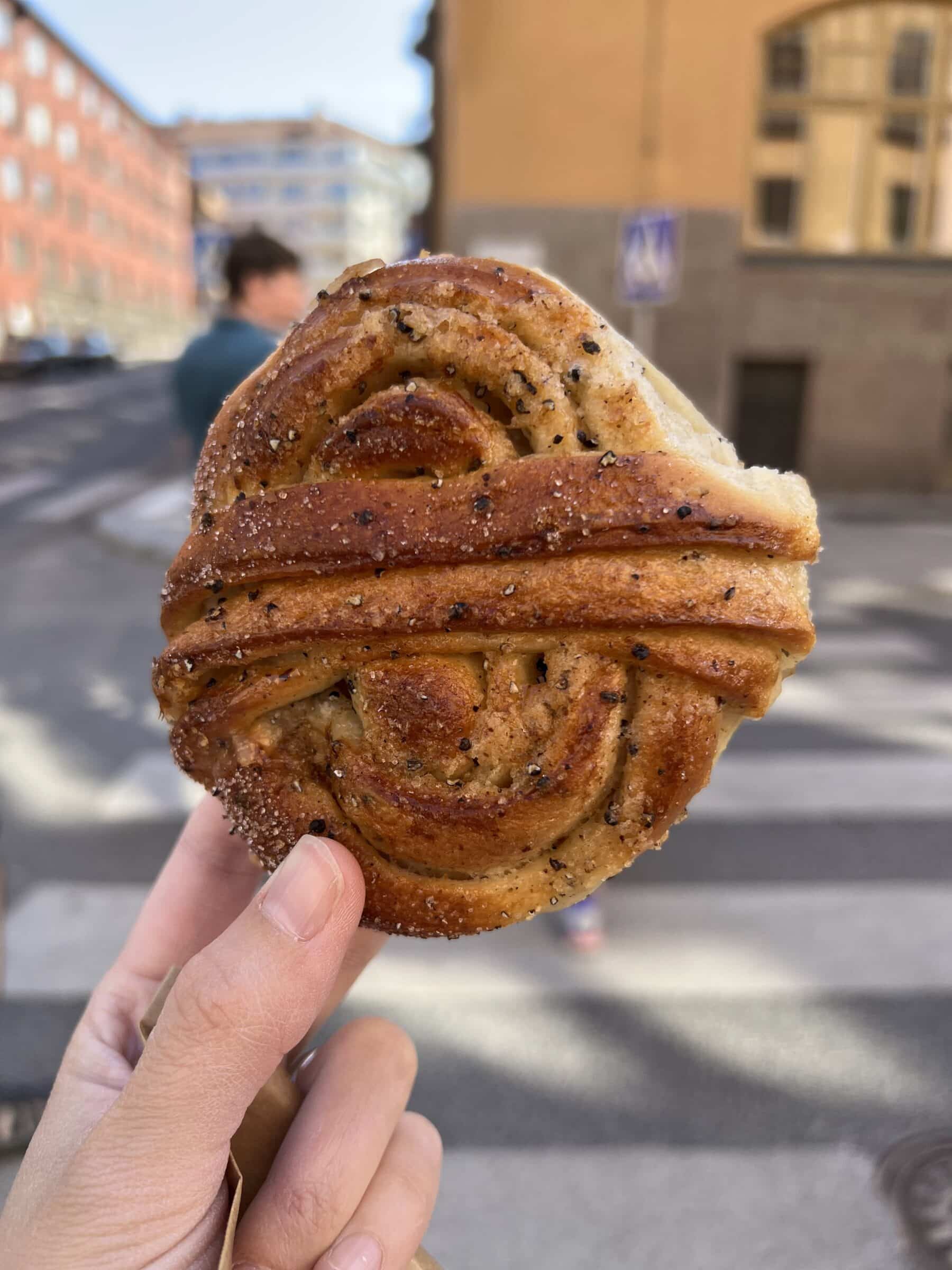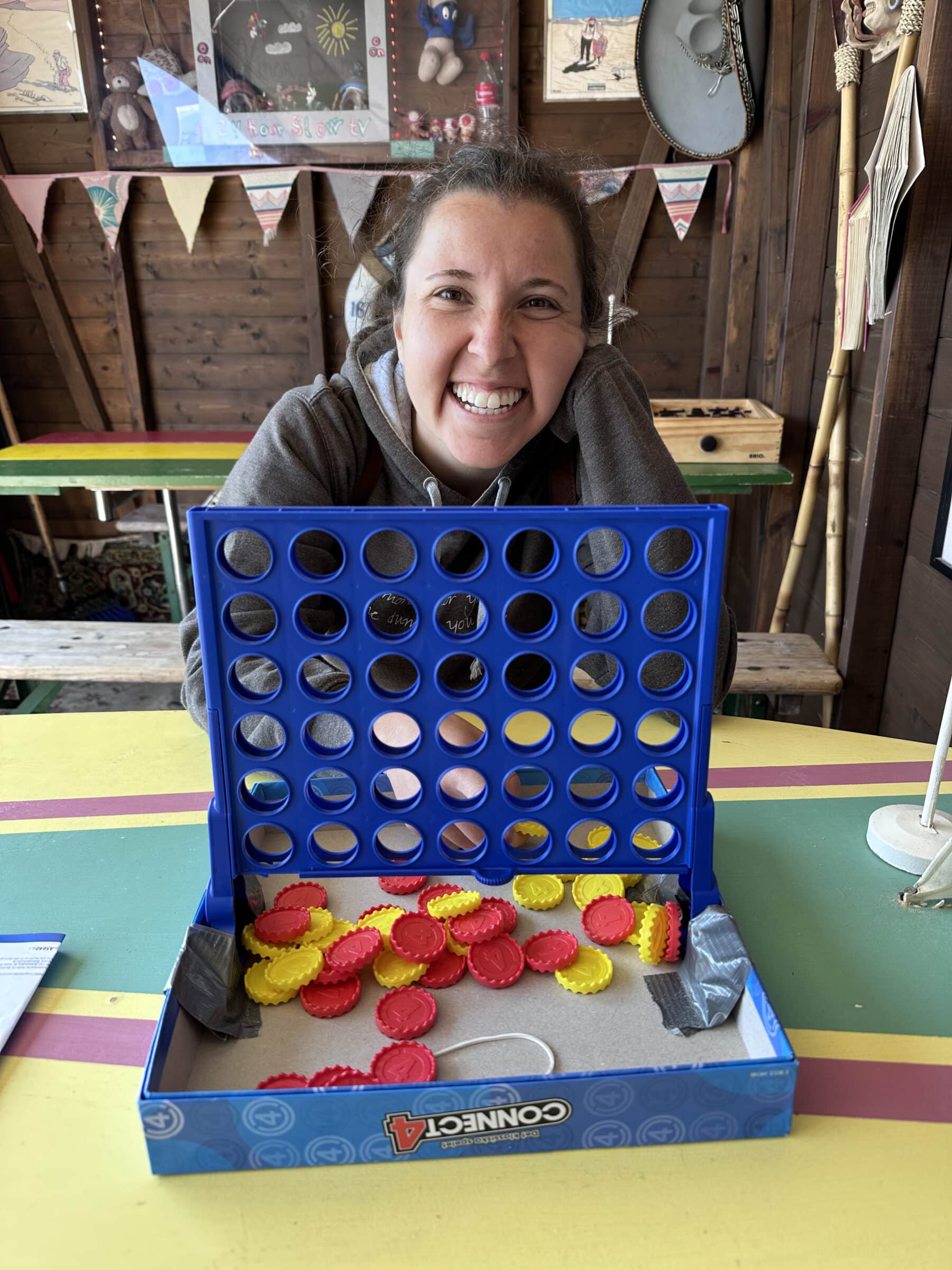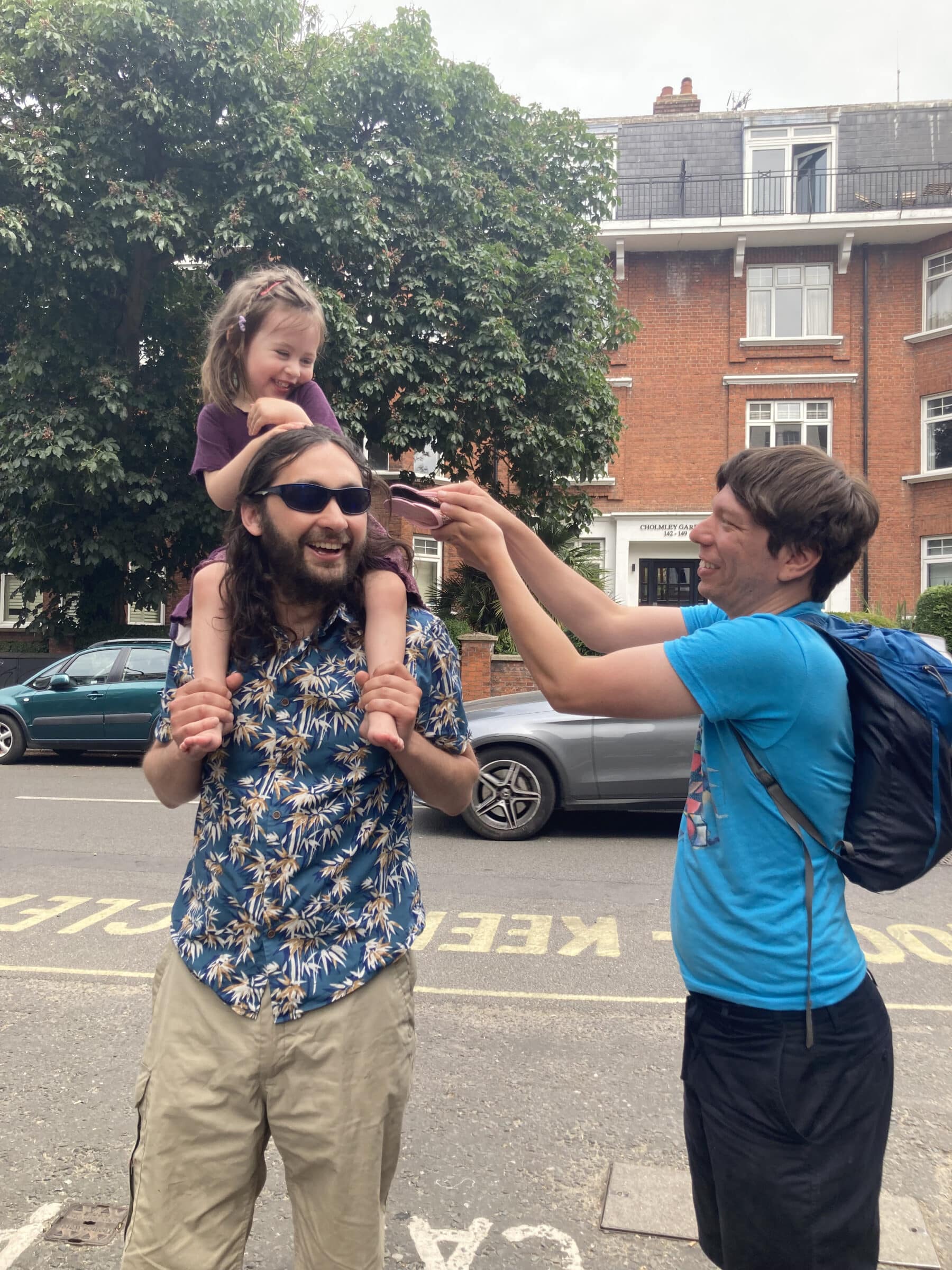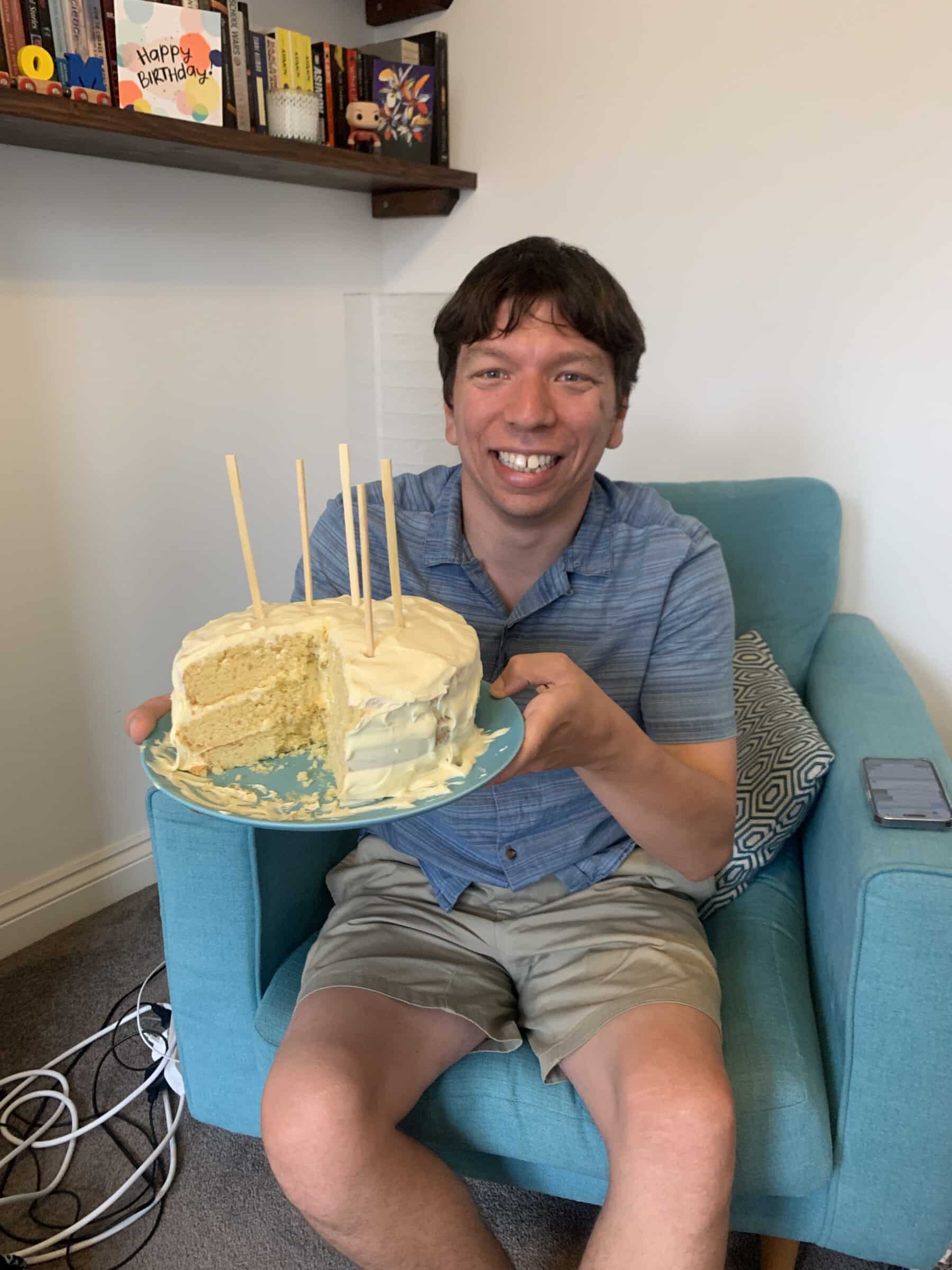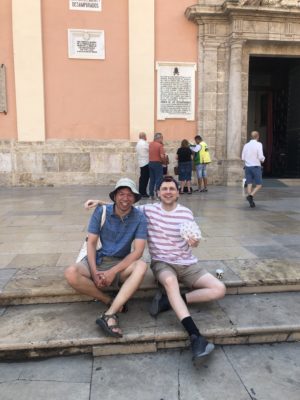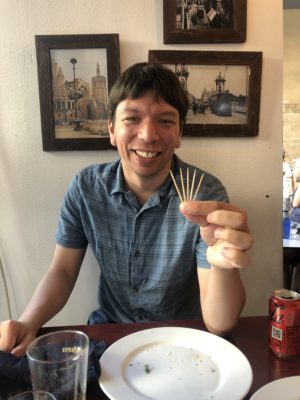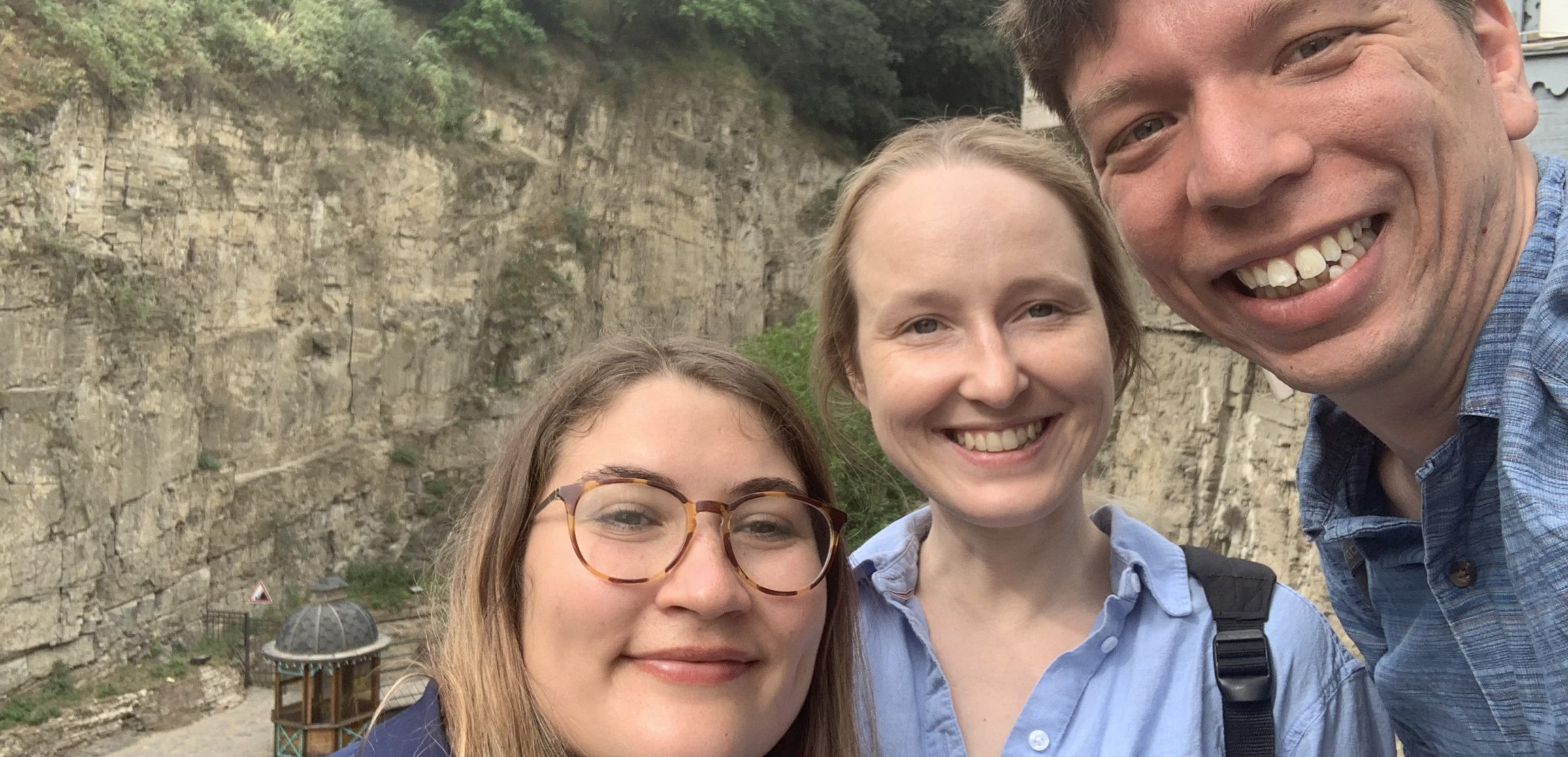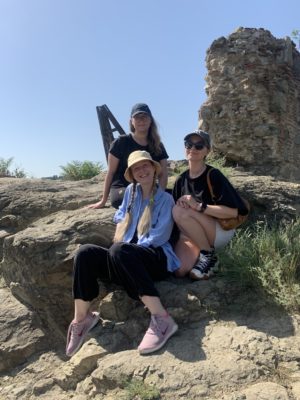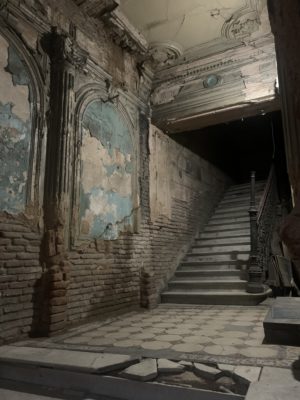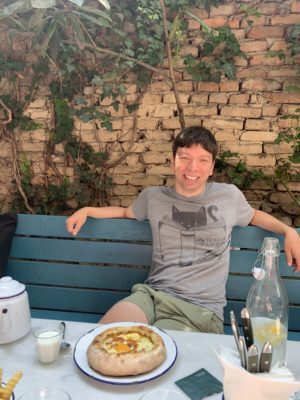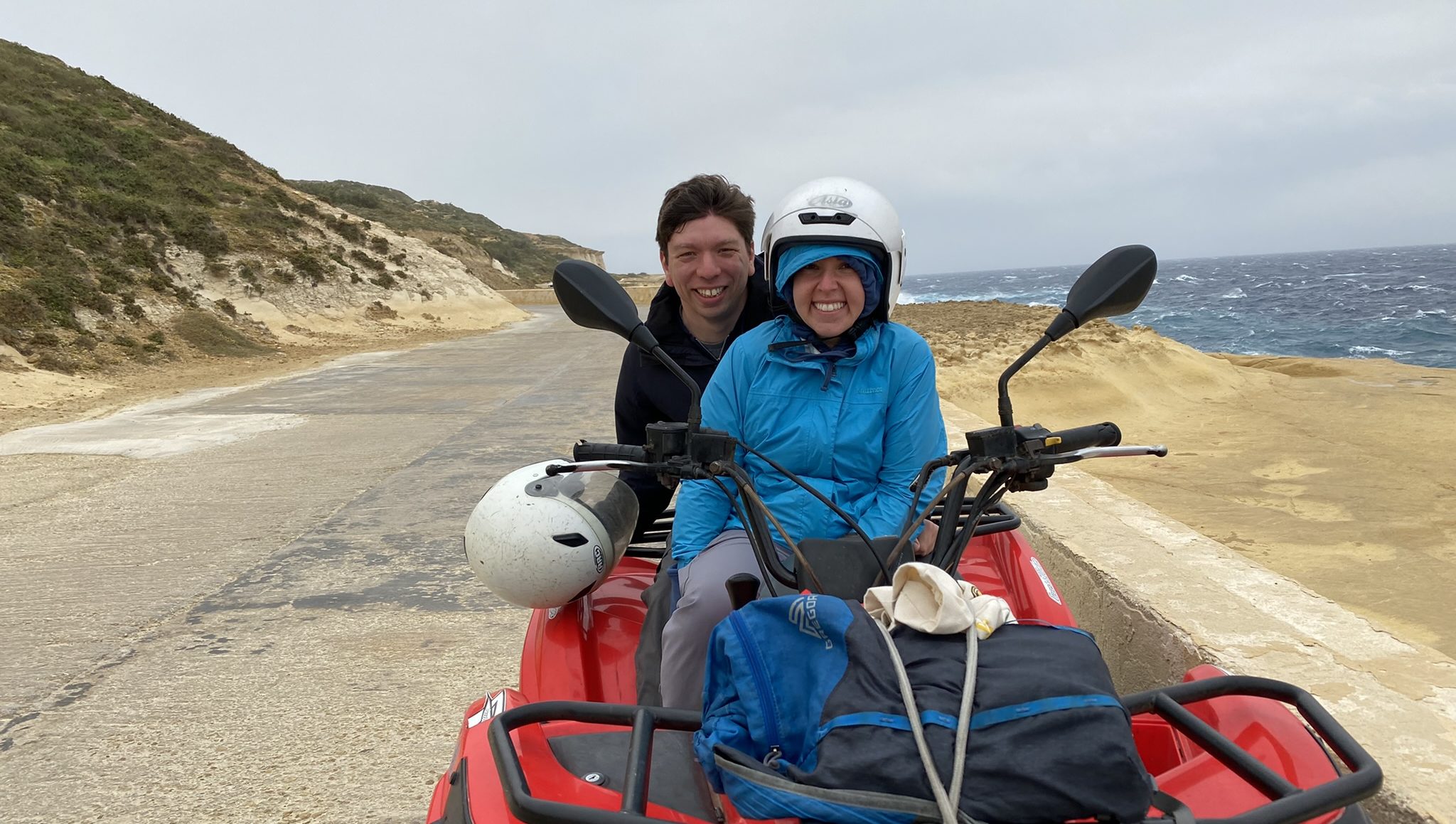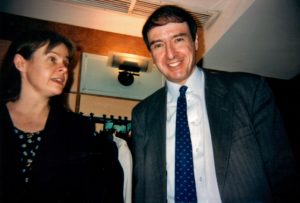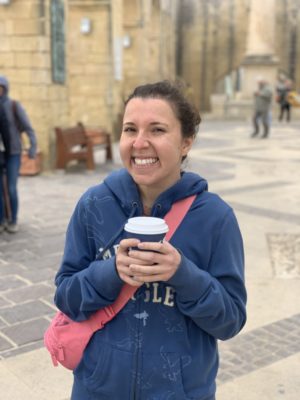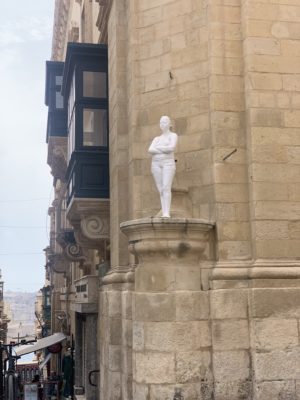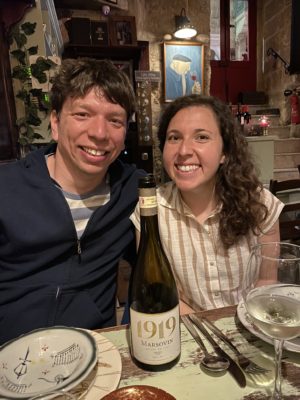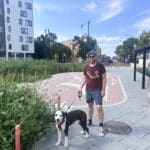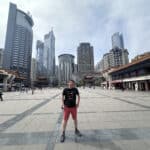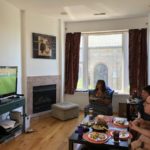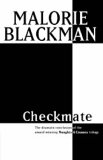Hej! We spent last week in Sweden with Catherine, AJ and their incredible baby daughter and – to be honest – we’re all about ready to move to Stockholm and share a flat together. But in the meantime, let me gush about what a great week we had. 😊🇸🇪
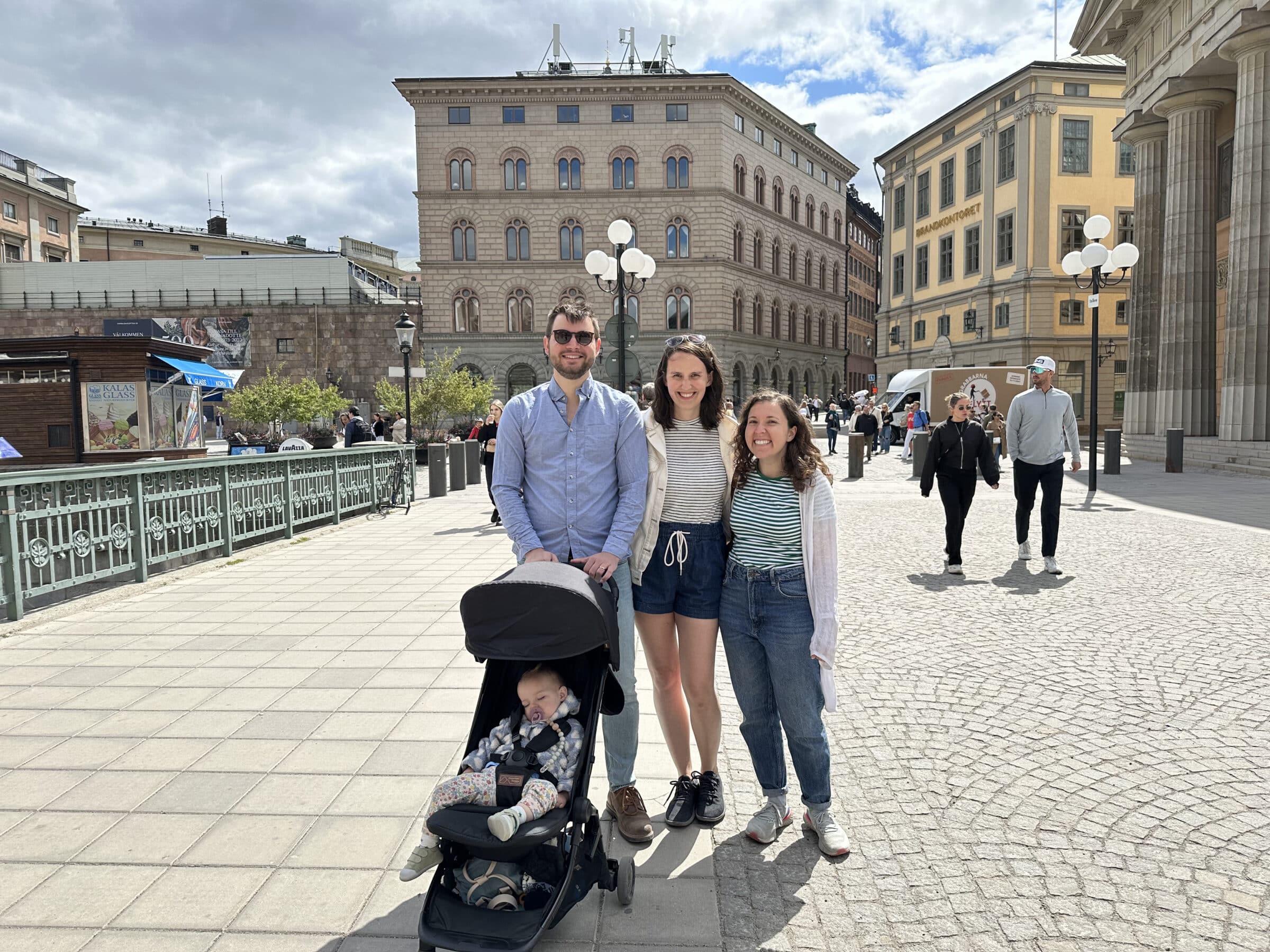
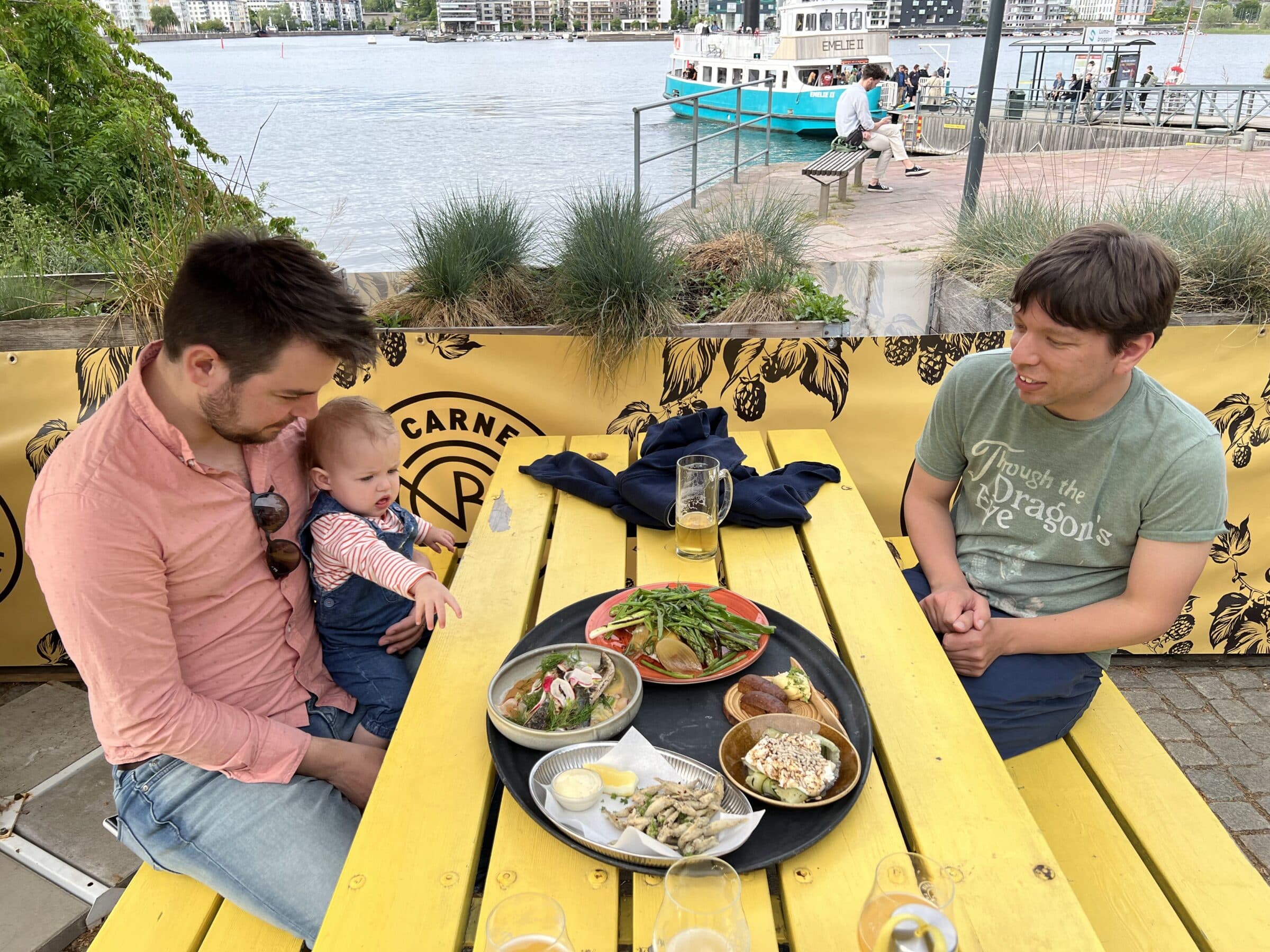
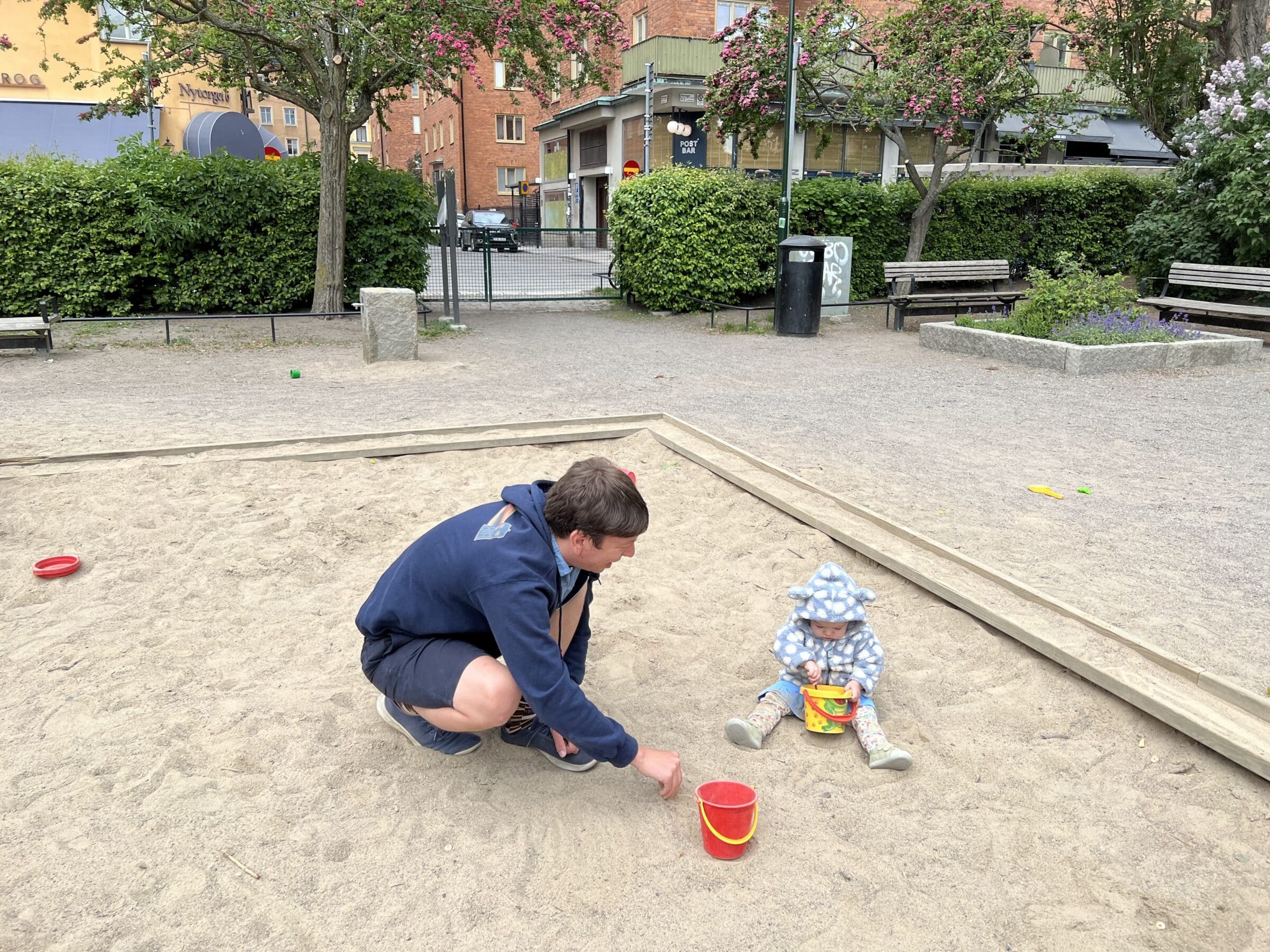
Having arrived pre-armed with the Stockholm Go City pass for our two full days in the capital, we started our whirlwind tour with the Fotografiska museum of photography. Well, technically we started with a very nice lunch in the bougie restaurant on the top floor of the Fotografiska, but we worked our way down to the art eventually. I think the exhibition we all liked was Diana Markosian’s Santa Barbara, a recreation of her mother’s migration from disintegrating post-USSR Moscow to California as a mail-order bride. (This was especially resonant having only just seen the play Patriots in London with my mum on Friday night, but more on that later.) That day we also made it to the Nobel Prize Museum – the coolest part of which is a toss-up between reading some of Einstein’s letters and the mechanical ceiling display in which every Nobel Prize winner slowly circulates around a track. If you’re someone who’s reading this and feels you might be close to winning a Nobel Prize, I hope this is the incentive you need to keep going.

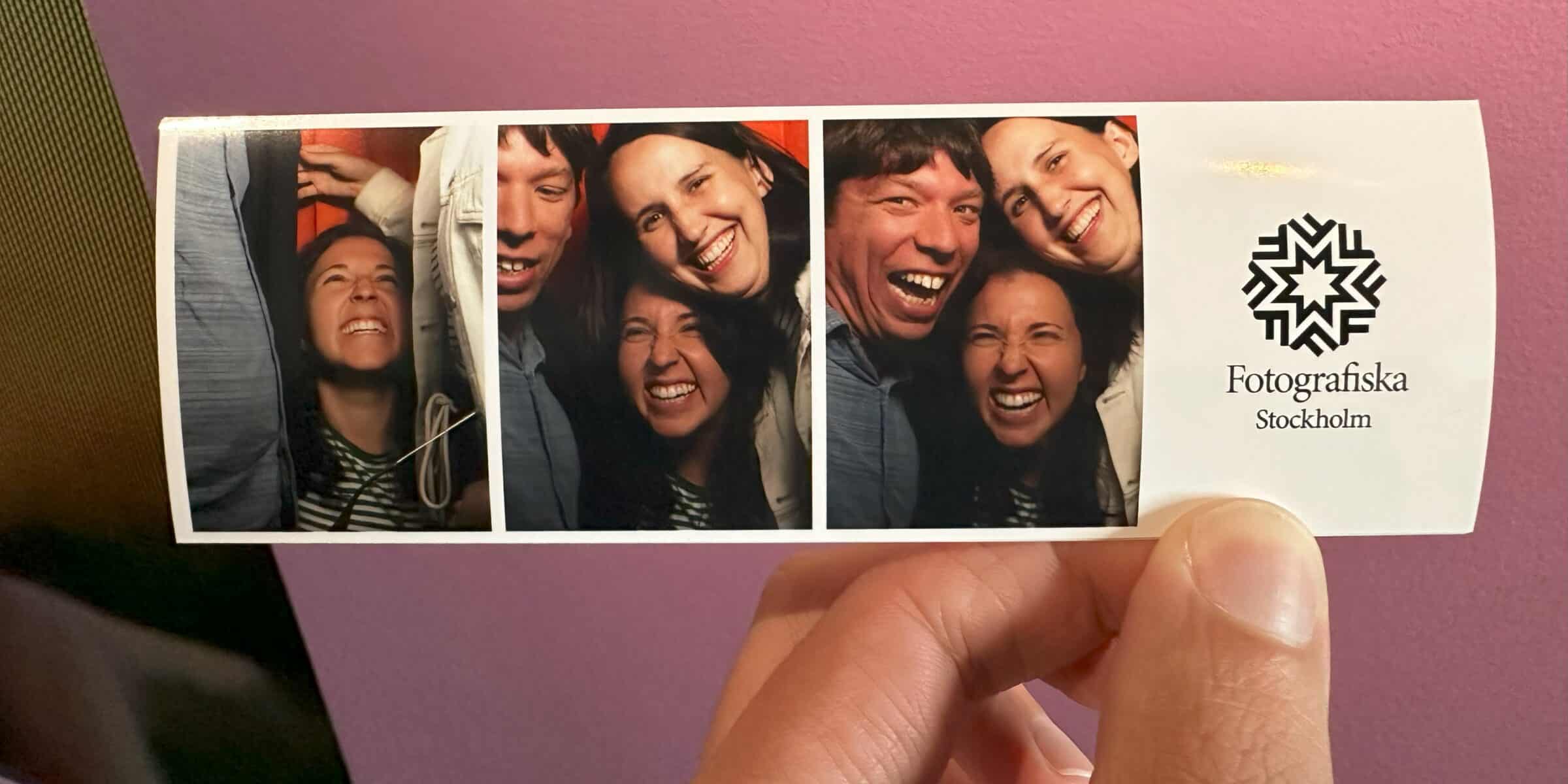
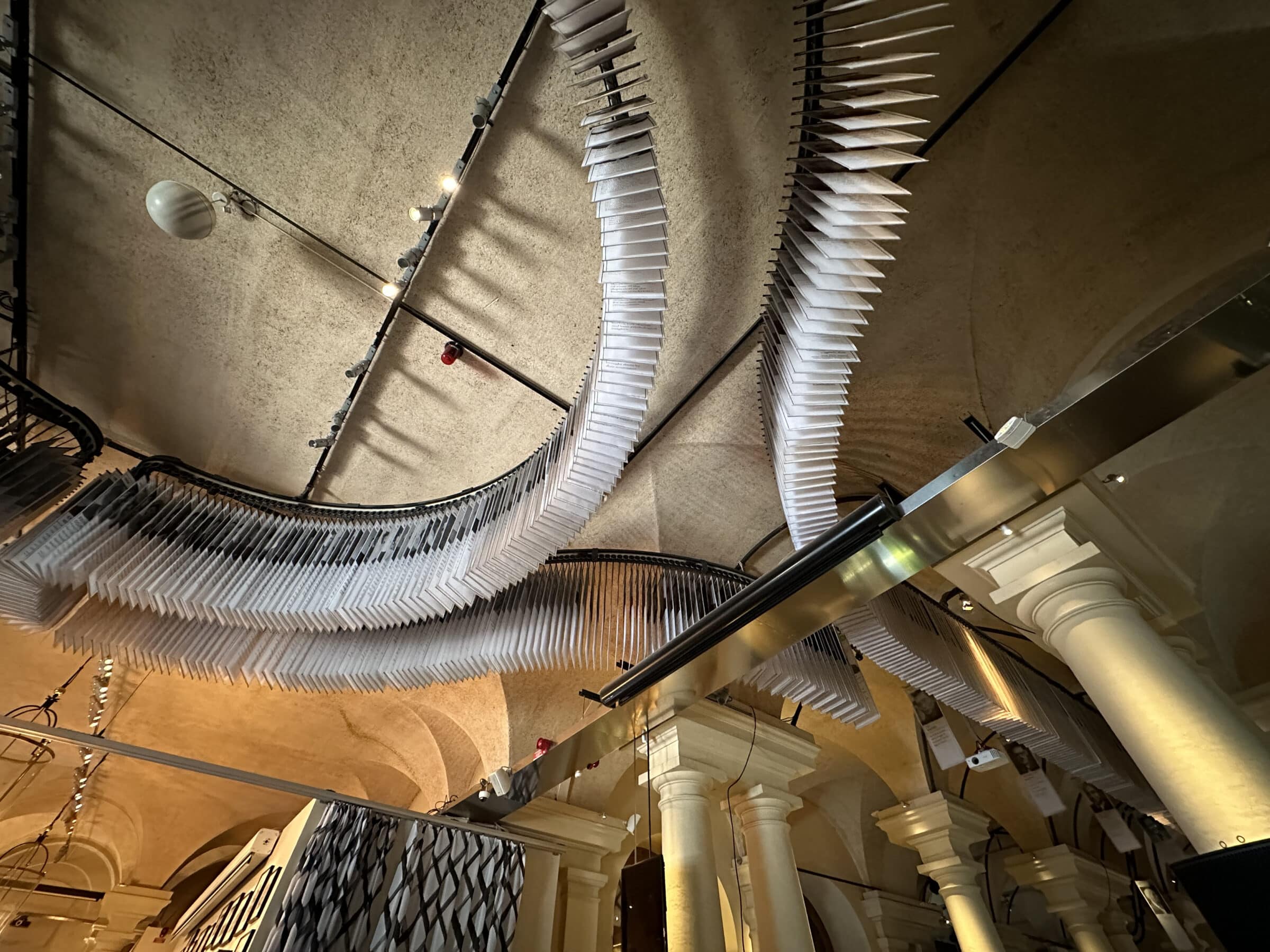
There is something charmingly mad about Stockholm. It just seems like a massive effort to build a whole city around many little interconnected islands, but of course everything is organised brilliantly (at least through the eyes of a tourist) so the next morning it was easy to catch a ferry across to Skansen, the world’s oldest open-air museum which is part-zoo and part homage to pre-industrial Swedish life. We wandered around, admired the bears and puzzled over why Catherine’s ancestors decided to leave such a charming and idyllic country and get on a boat to Minnesota instead. (Side-note: the island of Djurgården also boasts its own theme park, Gröna Lund, which we didn’t visit but whose rollercoasters were teasingly prominent in the skyline. Next time!)
After an outdoor lunch (and wine, lots of wine) at the very sunny Rosendals Trädgård garden café, we meandered along the riverbank to a cluster of museums, popping into the Nordic Museum, the Vasa Museum and the Viking Museum, where AJ and I encouraged his child to arm herself with a Viking sword while Randi and Catherine drank beers outside, blissfully unaware. Of these, the Vasa is the most striking – the whole museum being built around a largely intact 17th century Swedish warship which was recovered from Stockholm’s harbour in 1961.
Once you actually read the exhibits, however, things get a little disappointing. Why, you might ask, was a 17th century Swedish warship lying at the bottom of Stockholm’s harbour in the first place? The answer is because it sank a few minutes into its maiden voyage. Was there a sudden storm? An iceberg? Attack of the pirates? No, it turns out the whole design of the ship was structurally unsound from the very beginning and would have never coped with even a light breeze. So, in reality, the museum is a monument to a total failure. Sweden being Sweden, they were sophisticated enough in 1628 to hold an inquiry into the disaster, although since the King was partly to blame it’s maybe not surprising that it failed to reach any definitive conclusions.
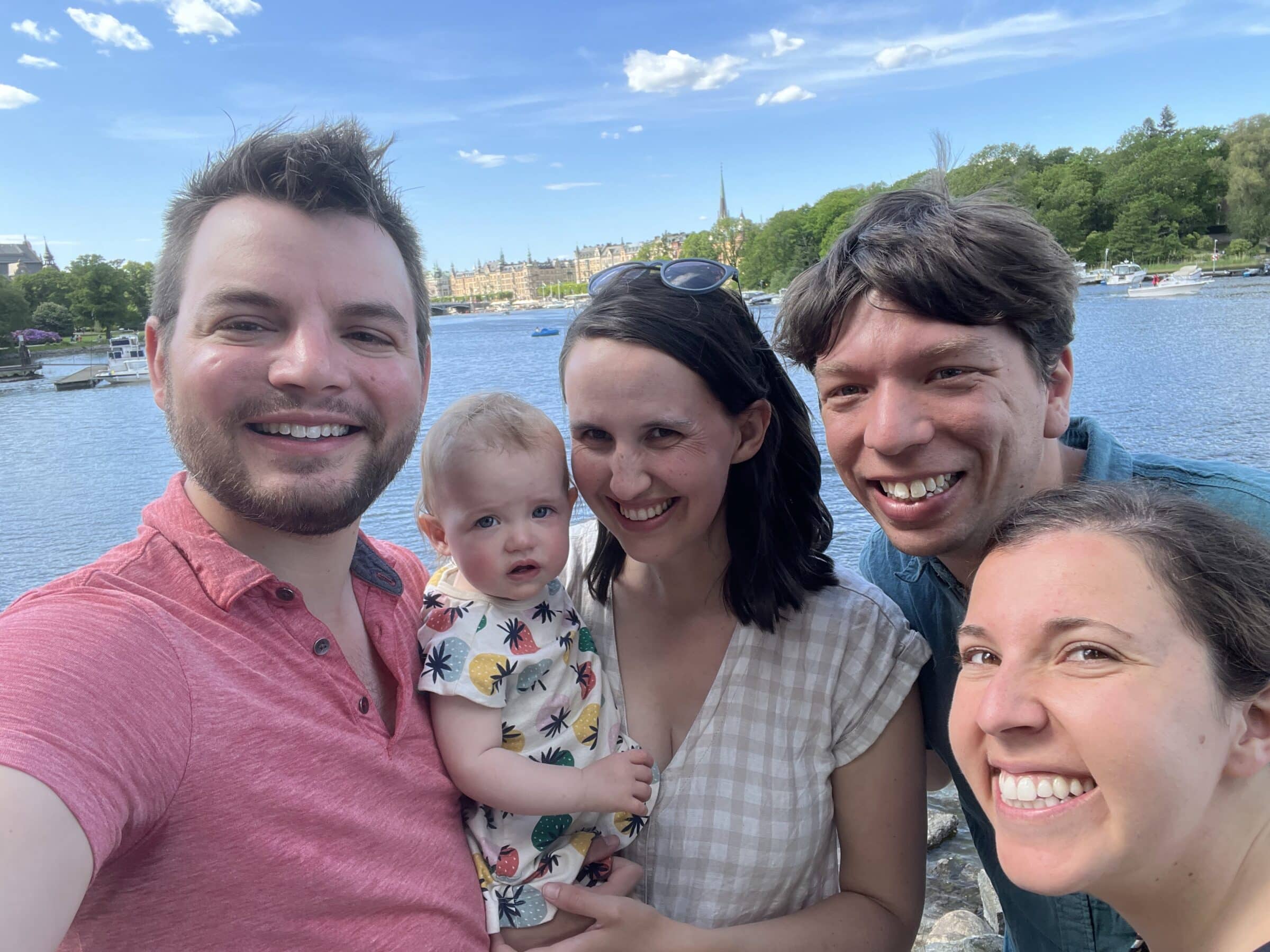
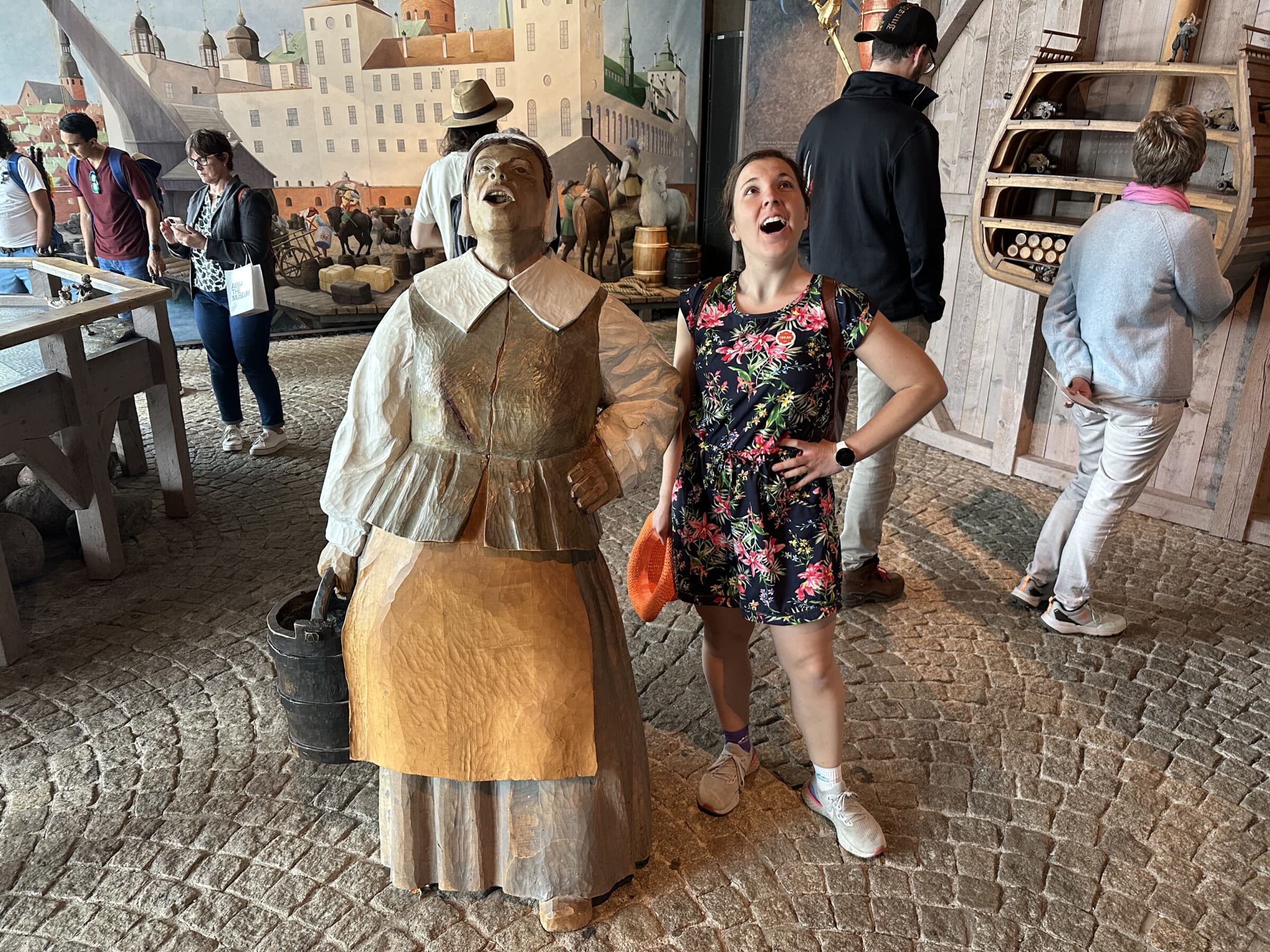


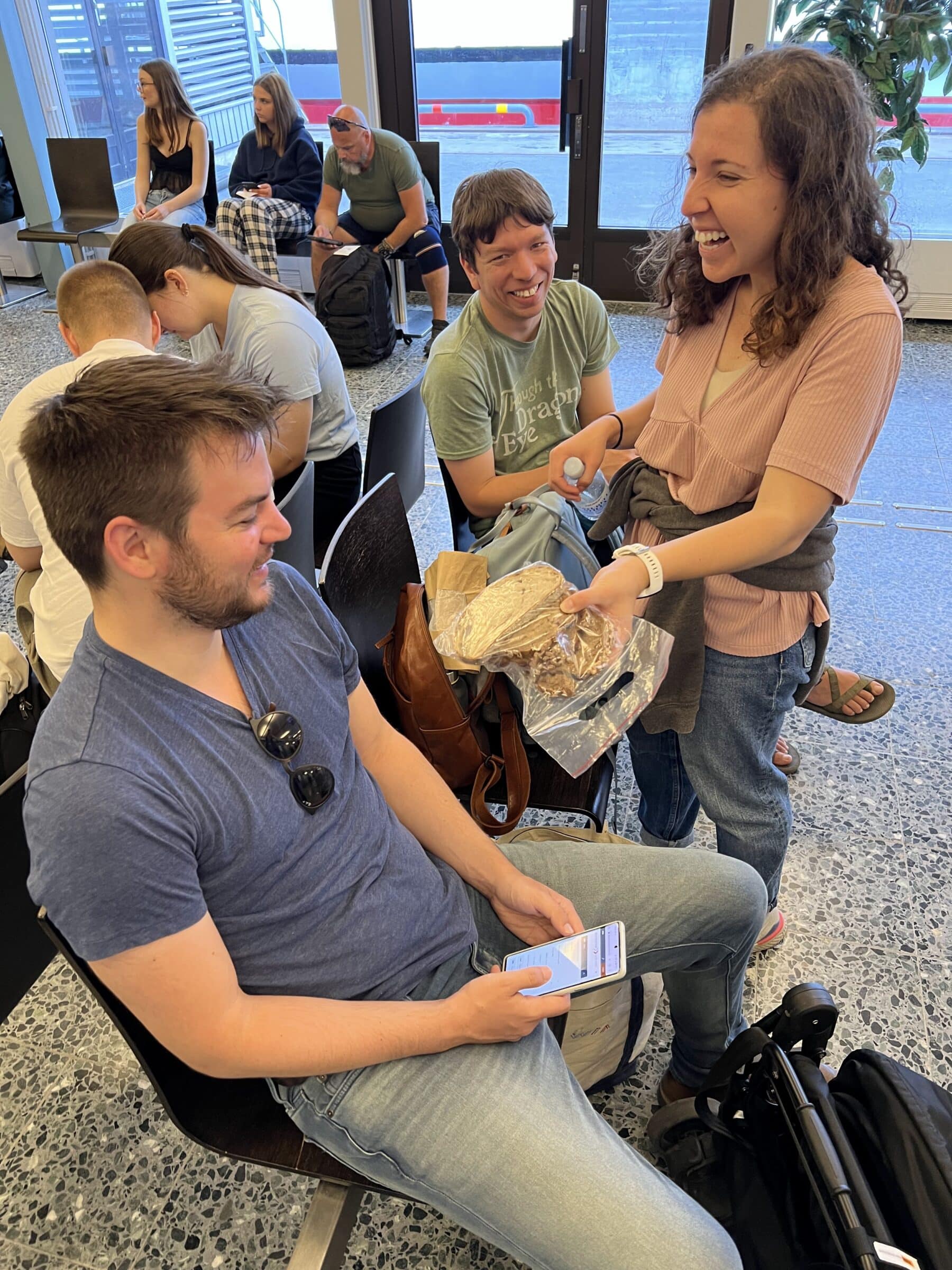
For the second half of our trip we took a ferry to the island of Gotland where, allegedly, Eurovision winner Loreen lives. (To be clear, that’s not why we went, and this unverified intel was provided later by a friendly but possibly unreliable witness who stood behind us in an ice cream queue.) Aside from possibly being Loreen’s home, Gotland is famous for the medieval town of Visby and its beautifully-preserved historic centre, which is dotted by many, many church ruins and encircled by a very much not-ruined defensive wall. Visby is where we stayed and also where we enjoyed a great walking tour by a cheerful British immigrant to Gotland, albeit one who left out any mention of the fearsome Victual Brothers – a gang of pirates who plundered Gotland during the 1390s before being expelled by some Teutonic Knights. My suspicion is that telling this story would have made the town wall seem less impressive.
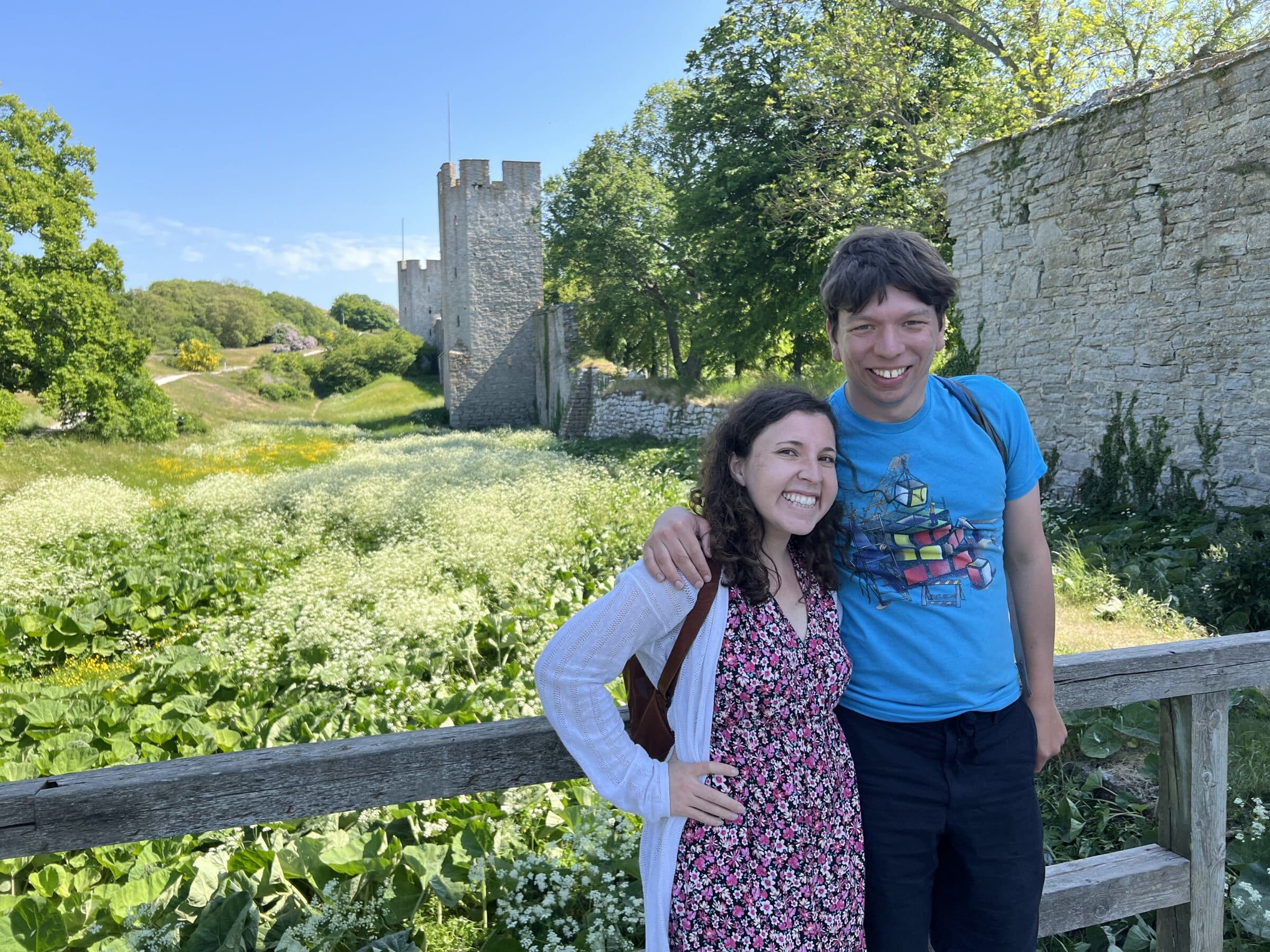
In addition to lots of eating and drinking in Visby itself, we also set aside a day to visit the much smaller island of Fårö, which has a tiny population (around 500) but is a popular summer spot for Swedes and just a short hop from Gotland on a car ferry. Despite being so small, it’s kinda incredible how different its east and west coasts are. One side is all windswept rock formations and shrubland, whilst we emerged onto the other to find sandy beaches and a sparkling blue sea. (The relaxed music from the beach bar was so incongruous it felt like we’d stepped out of reality into one of those dreamlike metaphorical cut scenes from a film.)
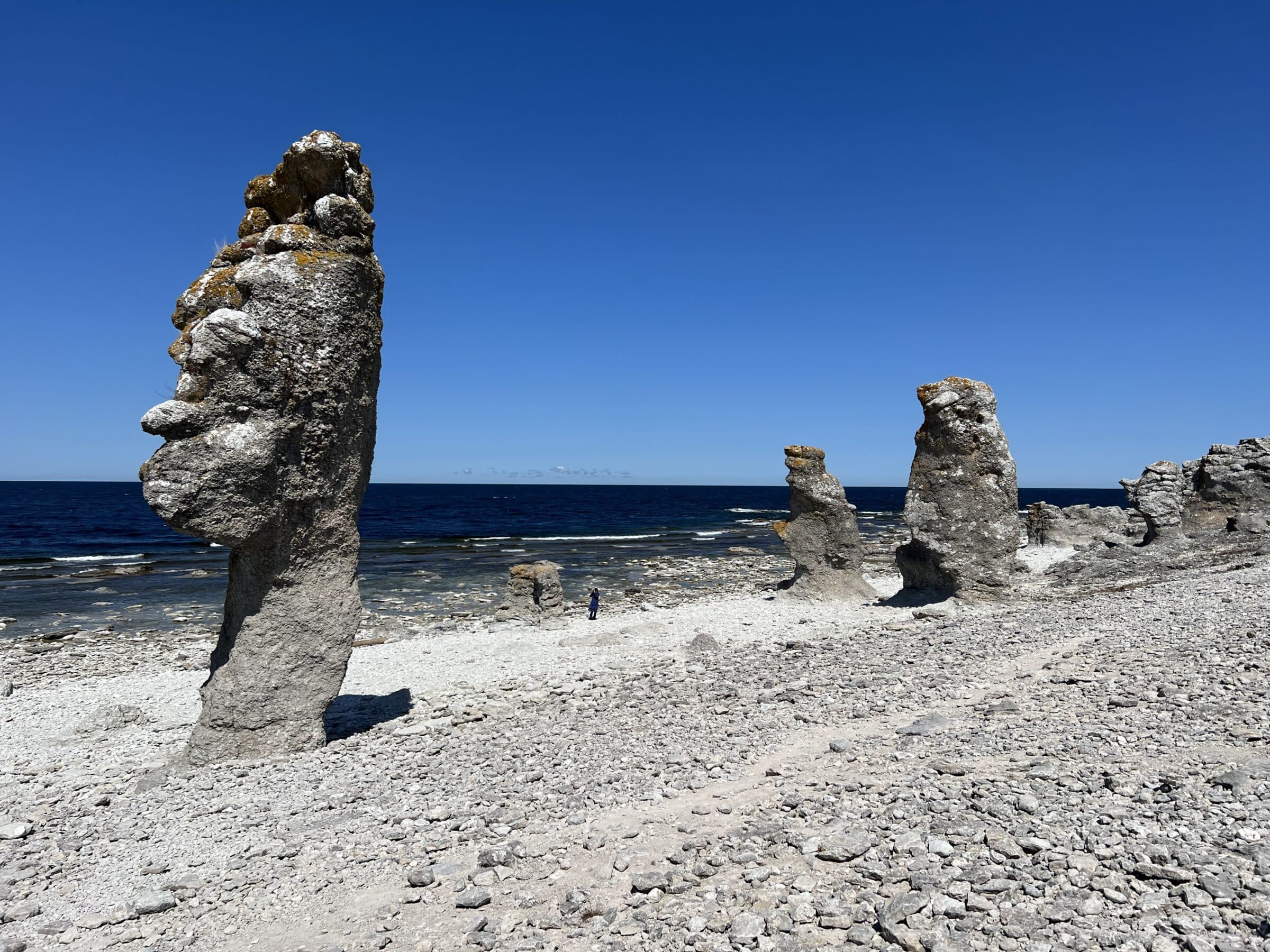

For lunch the island is blessed with a wonderful little pasta place, Pastamakarna, which is staffed mostly by Fårö residents and serves up warm, hearty bowls of pasta which made us all very happy. In fact, this is a good moment to sing the praises of all of the food we ate in Sweden, from our daily cardamom buns or the egg and caviar breakfast sandwich I picked up from a bakery at Stockholm Central to the ‘Chef’s Choice’ mystery meatballs on takeaway night, the amazing pickled herring or the tasty sourdough bread. As Randi and I had a later flight on Sunday morning, we also got to sample/gorge on the breakfast buffet at the fancy hotel which Catherine very generously donated her points for us all to stay at on the last night back in Stockholm. Would recommend.
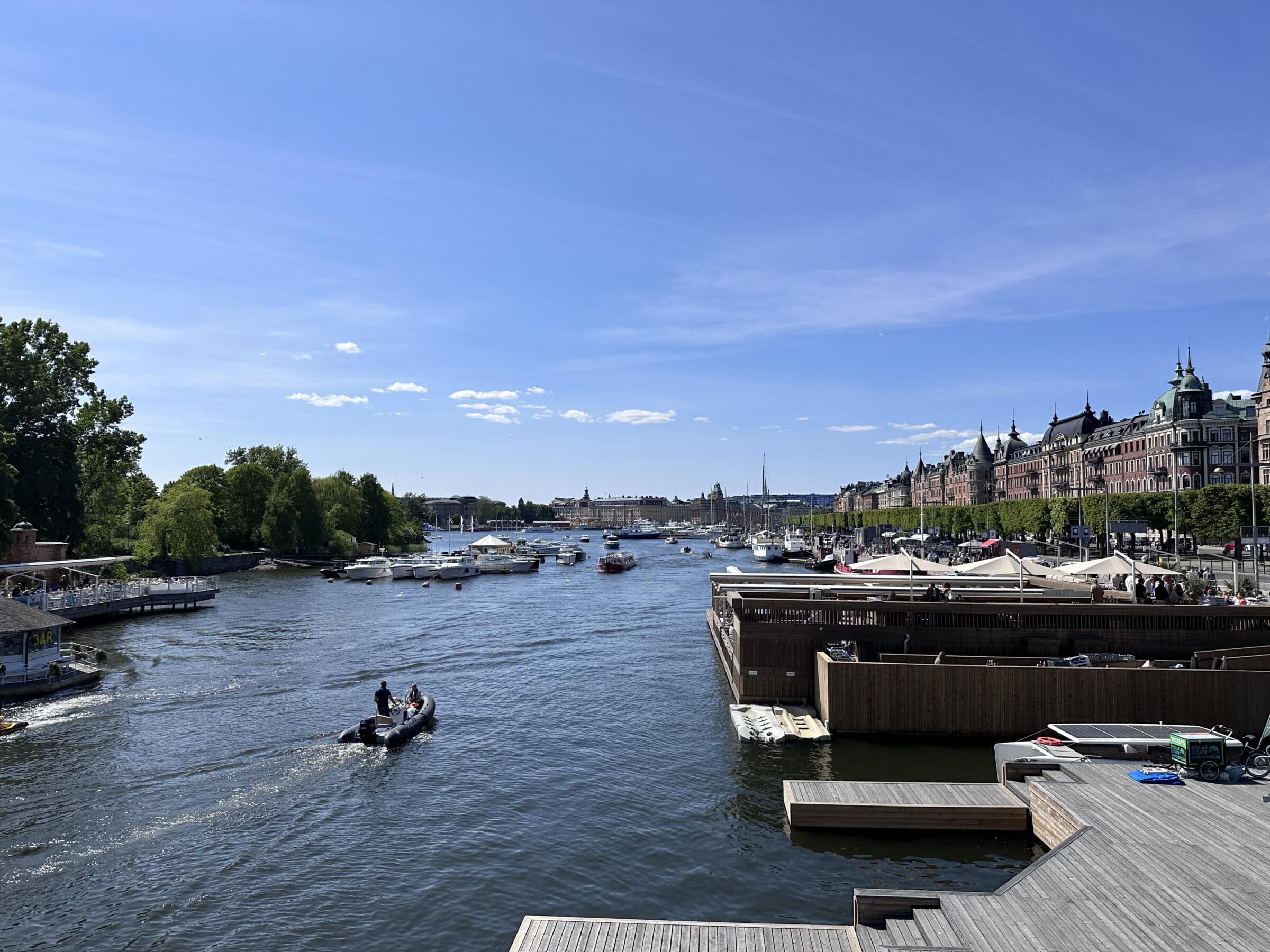

To sum up: Sweden is great, and let’s not think too much about the other half of the year when those long, light summer evenings get inverted. Our only major failure was failing – twice! – to turn up early enough to bag spots on the English-speaking tour of the Swedish parliament, but – if any Swedes are reading this – please note that we did not pretend to be Swedish speakers and sneak onto that tour instead, as other tourists definitely did. We did make it to the ABBA museum on the last day, however, of which my favourite part was simply watching clips of Eurovision presenters from 1974. My, how things have changed.
But honestly, I think I would be happy to share an apartment for a week with Catherine and AJ just about anywhere, especially when there’s someone fun to play with who has now mastered the art of walking around, laughing and swatting me with a fly swat. It was also so nice to be able to just stay up chatting late into the night, even if AJ did sometimes insist on making us guess answers to Swedish quiz questions. Can’t wait for our next adventure!
As mentioned above, before leaving for Sweden my mum treated us to Patriots as an early birthday present: a Peter Morgan play about the rise of Russian oligarch Boris Berezovsky in the ashes of the former USSR, his early support for Putin as his protege/puppet and then his dramatic fall from grace and exile in London as Putin turned out to be less controllable than planned. It’s such a fascinating story – the type of play where you’ll find yourself ingesting giant Wikipedia articles on the Tube home afterwards, trying to work out how much is true before concluding that it’s basically all true, at least so far as the basic facts. Even the events which I lived through (such as the poisoning of Litvinenko) is now a shock to remember that it happened. And the lead actors were both great: Berezovsky with all of the bullying charm which a kleptocrat requires, and Putin permanently seething with such suppressed rage that you can see it in how he walks. Another great play this year.
This first weekend back after Sweden has also been super busy, starting with Alison Hook’s retirement party on Friday night at QPCS. Ms Hook was my GCSE English teacher and all-round extraordinary organiser of so many trips, programmes, summer schools, productions and publications – the kind of force of nature which you take for granted at the time, but I’m so glad that so many people were there to pay tribute. (In fact, it was surprising how many former students and teachers I actually knew.) After staying over at my mum’s I got to hang out with Josh, Anna and Cora on Saturday morning – including more sandpit playtime! – before some shared birthday celebrations at Ottolenghi Spitalfields in the evening with mum, Randi, Tash and Cormac.
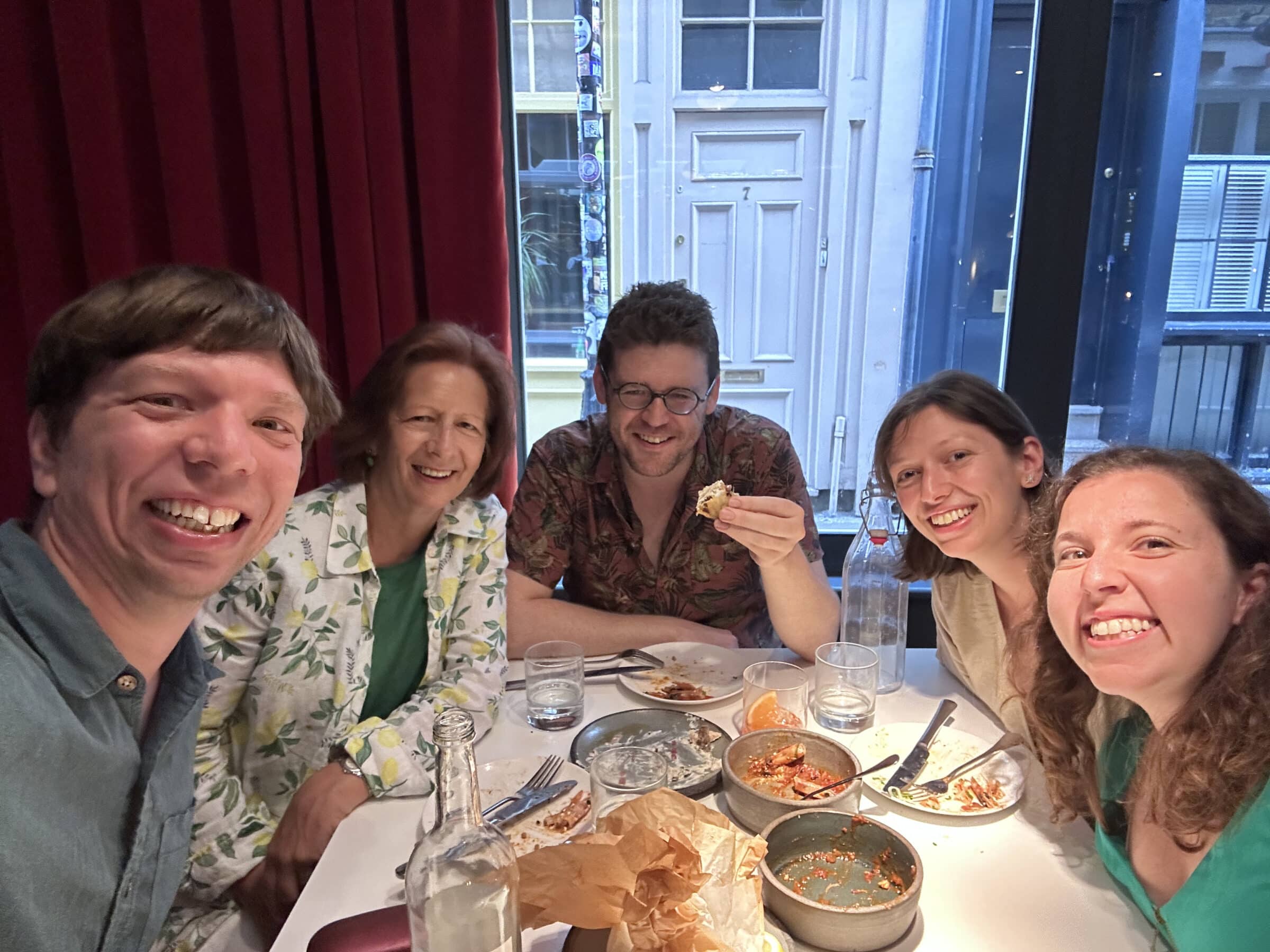
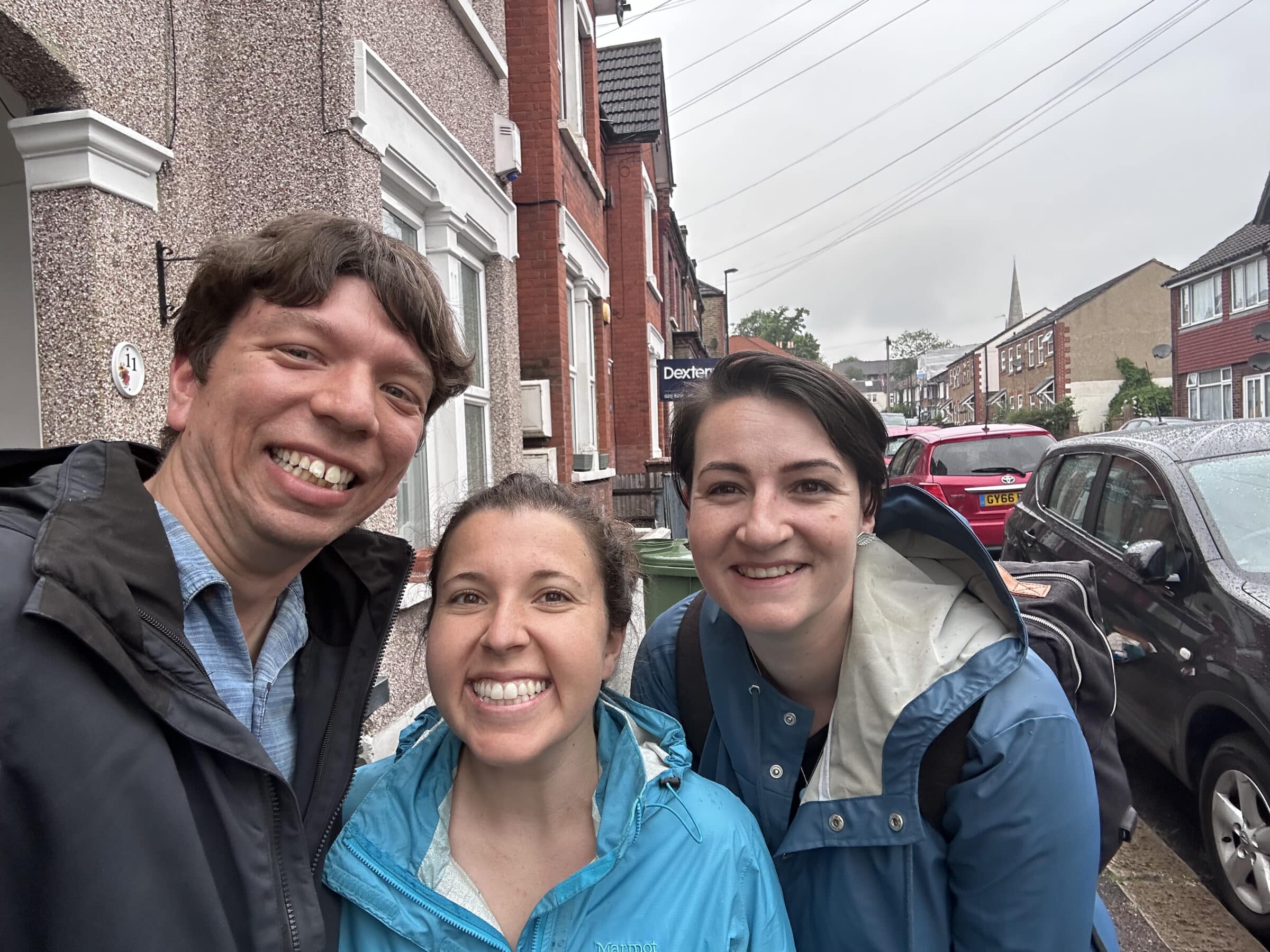
It is my birthday tomorrow, in fact, so finishing this blog before midnight is now a race against time while I’m still 33. But happily I can sign off on a wonderful (and very unexpected note) because today Randi and I got to spend most of the afternoon with my friend Jen, who lives in New Zealand but is visiting for a couple of weeks. I last saw Jen in 2016 but we had such good conversation about everything under the sun, and (as is maybe a running theme here) there’s basically nothing better than reuniting with a good friend. Especially when the sun is shining, you have a table at the Honor Oak and there’s a three-tier birthday lemon cake waiting for you back home…
Tack tack!
As trailed in my last post, we spent last weekend in Valencia to link up with Randi’s uni friend, Mike, on his post-Bar exam holiday to Spain. Spoiler alert: it was lovely!
Despite it being a quick trip we managed to pack a lot in, starting (for me at least) with a walking tour of the city centre on Friday morning. Our guide was great, and – in my personal favourite moment – did not seem fazed when Randi decided to clarify whether all of his references to the church’s statue of “our virgin” actually referred to the Virgin Mary and not, y’know, some local virgin. Close runner-up favourite walking tour moments included the history of the still-functioning Water Court of Valencia (which is both considerably older than the US Supreme Court and much more sensibly selected) and how the old course of the Turia river came to be turned into a public park. I actually remembered this fact from a Jay Foreman video (thanks, YouTube!) but I wasn’t aware of the government’s Plan A for the river’s replacement: a giant multi-lane motorway. I think Randi and I shuddered in exactly the same way.
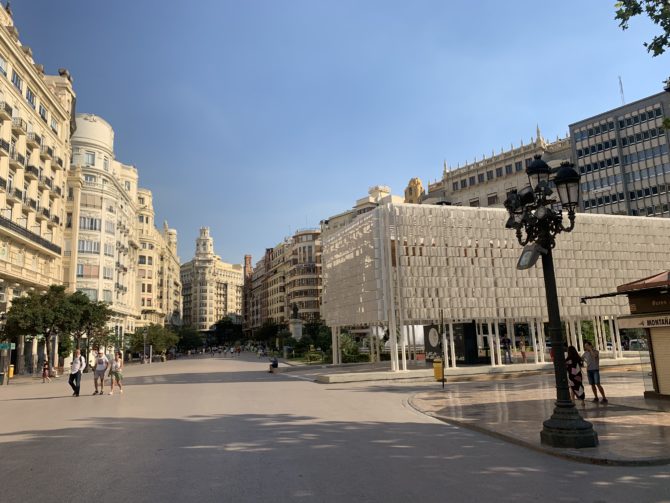
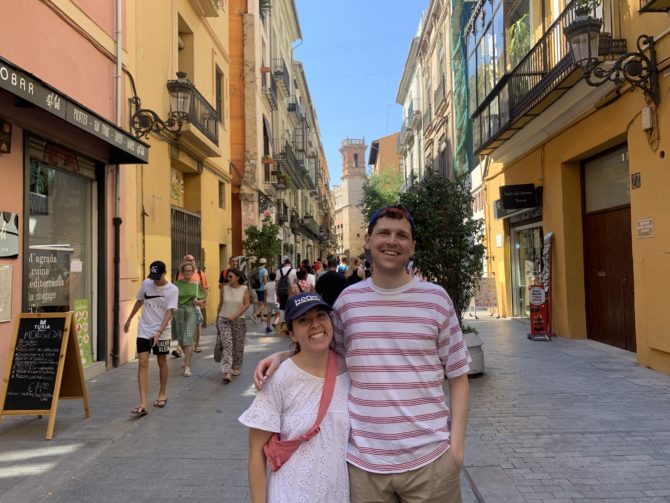
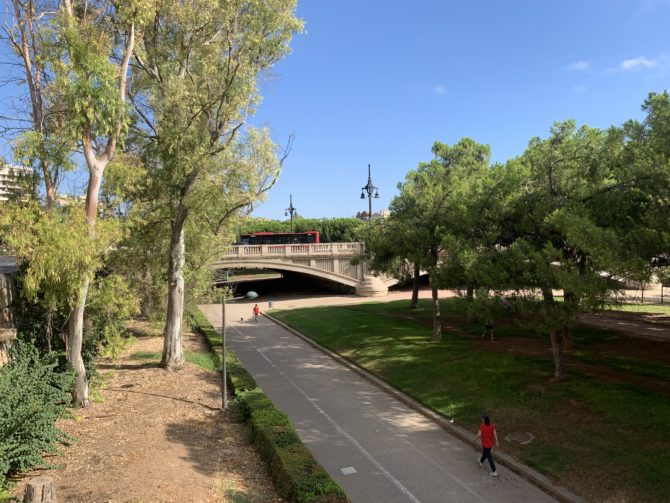
Although it may not feel like we live in the multiverse’s best timeline right now, at least we do live in the world where Valencia has a long park rather than a long road, so the next morning we took advantage of this fact and walked through it down to the City of Arts and Sciences. This open-air complex is quite hard to describe – so perhaps just look at the surfeit of photos below – but essentially it’s like stumbling across the headquarters of the United Federation of Planets, with a cluster of culturally worthy institutions linked by open walking areas and glistening reflective pools of water. All of the buildings share a stunning modernist architecture, and I really do mean ‘stunning’ in the sense of ‘stunningly good’ rather than the stunningly awful 60s British modernist buildings made of concrete. (Dear British architects: why couldn’t we have done this instead? Is it the weather?)
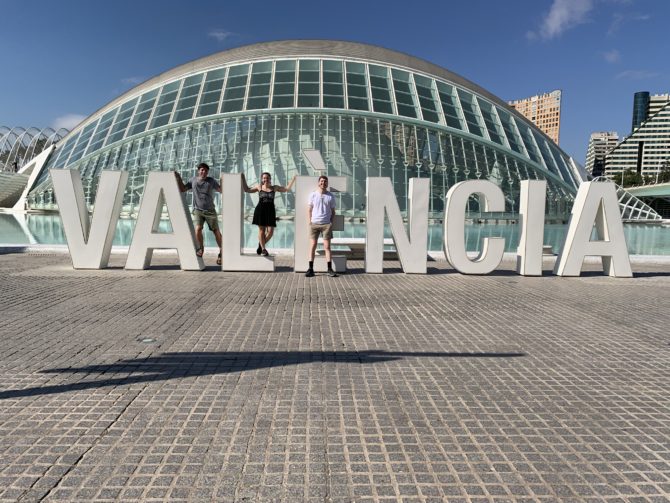
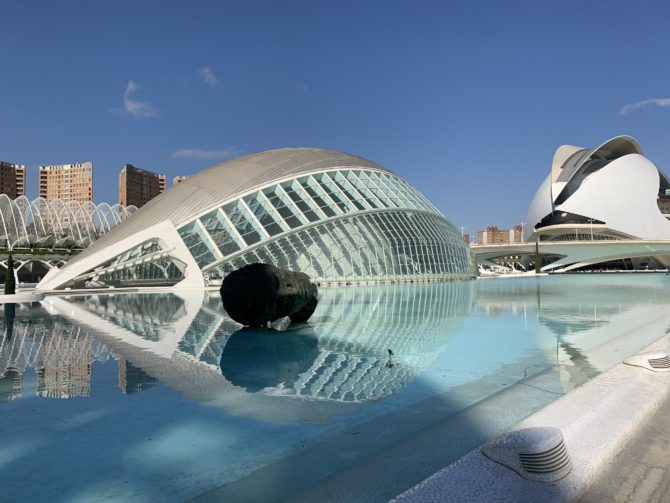

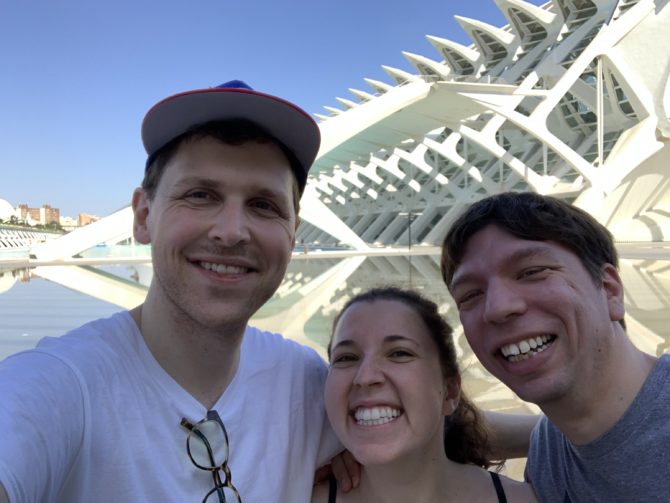
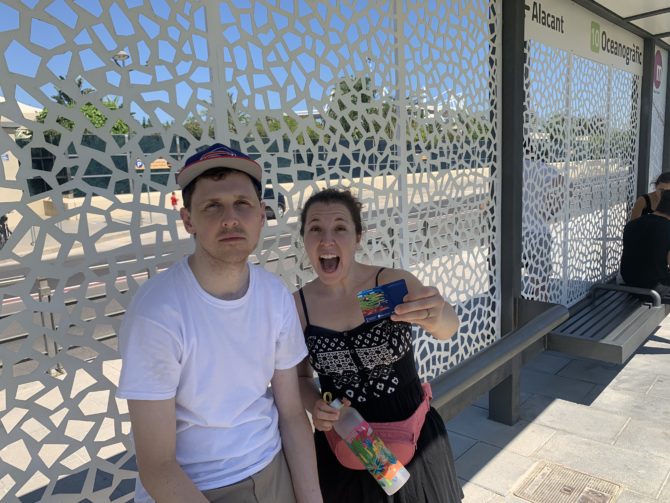
Our ultimate destination in the complex on Saturday morning was the L’Oceanogràfic – Valencia’s aquarium – where we dedicated a solid morning to staring at the pretty jellyfish, watching the dolphin show, sadly not coming anywhere close to the top in the pre-show dolphin quiz aimed at 8-12 year olds, holding our hands up against the penguin ice block and, relatedly, regretting holding our hands up against the penguin ice block. Then, in the late afternoon, it was beach time! Reader: the sea was so warm. It’s been so long!

This would have been a great trip in itself, with only minor disappointment at my failing to secure any Agua de Valencia (gin, vodka, cava, orange juice) at our slightly-too-snooty-for-cocktails tapas restaurant on Friday night. Fortunately, help was at hand on Saturday night, because – by fortunate coincidence – Randi’s ex-colleague Sam also happened to be holidaying in Valencia with her friends at the same time we were there, and they were extremely on-board with the plan to go for dinner and then touristy drinks together. We all bonded immediately over the challenge of finding a vegan-friendly restaurant – and massive kudos to Randi for having an American’s instinct to bail out the indecisive Brits from the first not-vegan place we sat down in by paying our €12 water tab and getting us all out of there again – and then afterwards we finally found a bar willing to provide jugs of promised Agua de Valencia. Hurray!
Oh, and since you asked, Metrovalencia is a very nice transport system. This summer it’s also free to ride every Sunday, so many thanks to the man who stopped Randi and I from throwing away money trying to top-up our cards on the way back to the airport. And thank you to Mike for letting us crash your Spanish trip for a long weekend!
In my job I’m lucky enough to work with a truly awesome development team, based in many different countries, and for a long time I’ve tried to get a group together for an in-person meetup. For a while this was impossible thanks to the pandemic, and then the war in Ukraine, but last week were able to gather in Georgia’s capital, Tbilisi, which meant that I could finally hang out with Kira, Maria and Hanna IRL and (spoiler alert) drink a lot of wine.
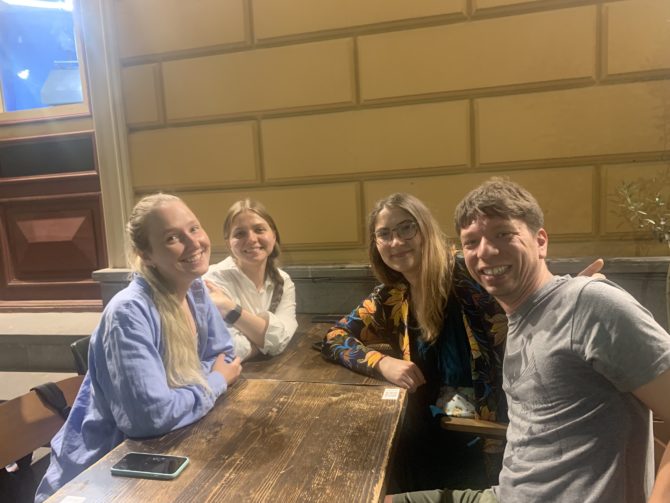
The scheduled options into Tbilisi’s airport are not fantastic, so by the time Maria and I had completed our overnight flights, met up at the airport and taken a Bolt back to our Airbnb it was already 5am and the sun was coming up. Thankfully, Kira was waiting for us with our inaugural bottle of sweet Georgian red wine, and we all sat on the terrace pretending that we’d all had more sleep than we’d actually had.
A few hours later Kira took us on a short tour of Tbilisi’s Old Town, which at 9am on a Saturday morning felt more like a film set than a real city. The streets are narrow and hilly, with plenty of quirky street art and gorgeous views over the rest of the city, but almost no other people to be seen. It soon became clear what should have already been obvious by looking at a world map: Georgia is pretty far south, hot, and therefore has the same late-rising, late-sleeping culture you’d expect anywhere else at this latitude. Only tourists would wander around in the morning, duh.
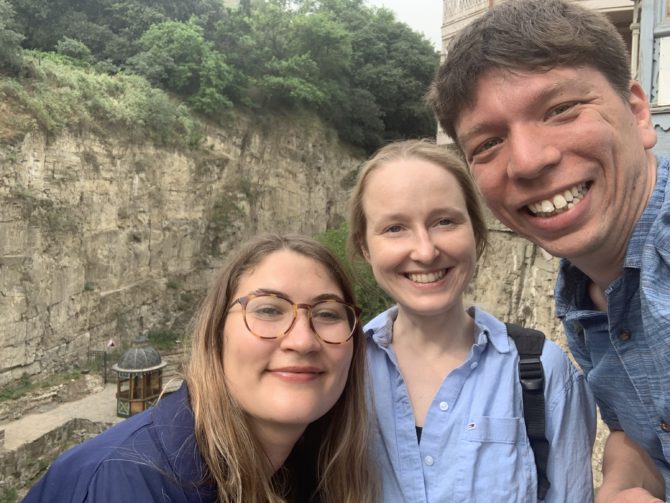
Still, I hadn’t brought my hiking boots for nothing, so the next morning we made another early-ish start so we could meet up with Hanna and climb up to the ancient fortress which overlooks the city before it got too impossibly hot to walk around. (Don’t worry, we’re a good team. Everybody came prepared with hats and sun cream.) After a while on the hills we descended into the National Botanical Garden, which was beautiful, even though I’m sure we only saw a very small portion of it. Shout-out to the large group of children, all dressed up in matching outfits, who were being filmed singing and dancing by the base of the waterfall where we were sitting, and apologies to whoever’s job it will be to edit us out of this particular music video.
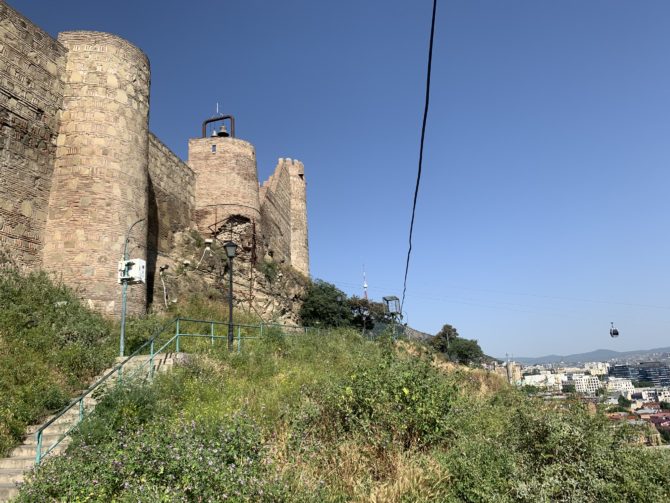
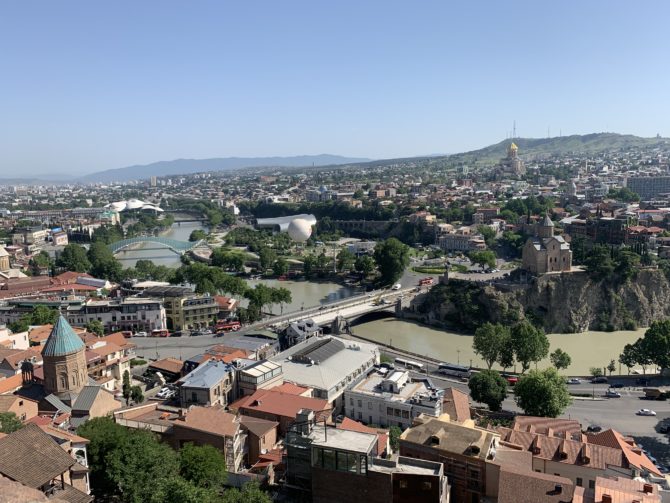
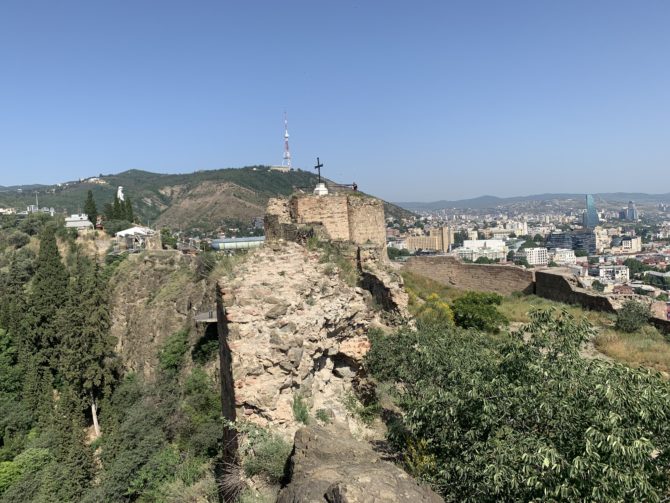
Tbilisi is a fascinating place, and if you’re looking for a relaxing balance of nature plus tourist amenities in a friendly atmosphere then I would totally recommend it as a city break option. It very much feels like a place in flux. For example, the streets are lined with Soviet-era apartment buildings which feel a little abandoned on the outside, but also house one or two shops, bars or restaurants inside which are buzzing with energy and life. I was fascinated by the haunted-house foyers of these buildings, and I very much wonder what they will look like in a decade or two.

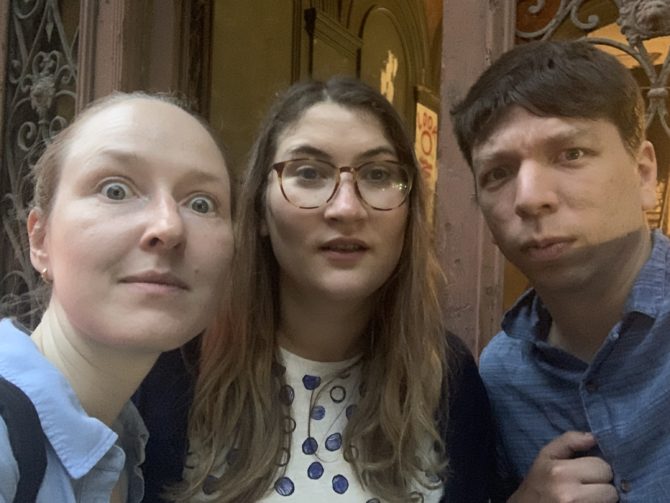
During the week we were, of course, working from our (thankfully air-conditioned) apartment, so we only scratched the surface of things to do in Tbilisi. That said, we did manage to tick off some other items, including a visit to the Gabriadze theatre on Wednesday night to see a marionette performance of Ramona. Ramona is a beautiful locomotive engine who is separated from her lifelong love, and – despite the meddlings of an officious Soviet bureaucrat – joins a travelling circus troupe and learns to walk the trapeze. It was genuinely extraordinary and moving, and although obviously the English surtitles aren’t capable of communicating all of the history and nuance of the text, listening to the Georgian voices was also beautiful. My only recommendation, if you decide to visit, is to sit further back than I did so you don’t have to crane your neck to combine the text with the puppetry!
We also made it to a jazz club on Friday evening, which I also really enjoyed. And, to make this a fair cultural exchange, I also tried to provide the very best of Britain in return: namely Jelly Babies (which went down very well, albeit with initial qualms that “it seems weird to eat babies”), Dairy Milk, Crunchies, multiple episodes of Would I Like To You? and a rewatch of one of my very favourite films – Four Lions – on the last night with Kira. Oh, and of course everyone thought I was weird to add milk to my tea.
We also watched Encanto together (which was good and all, but I’m not convinced that it’s OK for poor Mirabel to be put through intense childhood trauma just because it serves some cosmic bring-the-family-together ends-justify-the-means grand plan!) and I introduced everyone to Dominion. Since Kira is a highly competitive board game expert, this inevitably led to several more games of progressively more drunken Dominion until she could beat me – but I did enjoy my brief winning streak while it lasted.
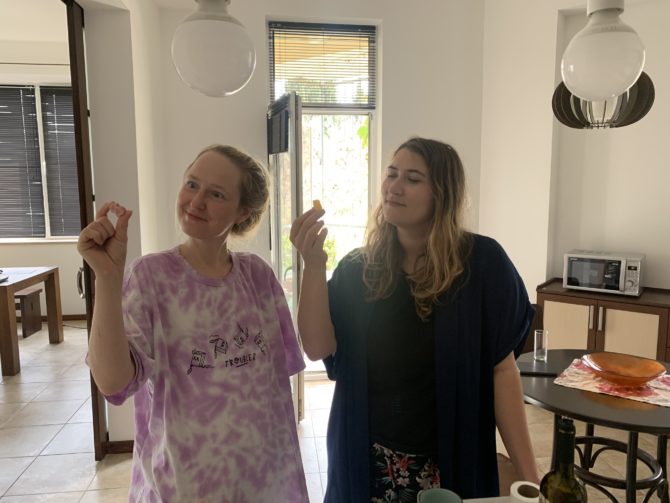

The other obvious reason to visit Georgia is the food, which is both (a) very delicious, and (b) extremely affordable for tourists. We ate very well, including a decent fill of the ubiquitous cheese-filled khachapuri!
Overwhelmingly, though, the purpose of this week-long adventure was to spend time with some of my favourite people beyond the confines of a Zoom call. I’m super-grateful to everyone for making the effort to congregate in Tbilisi, and I hope it won’t be too long before we can all play Dominion together again.
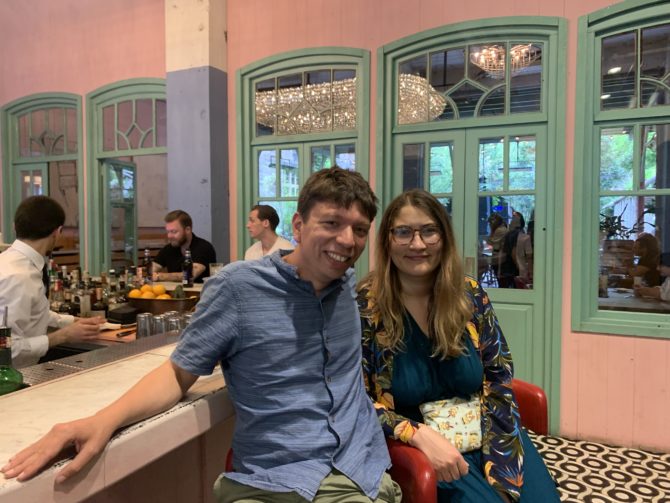
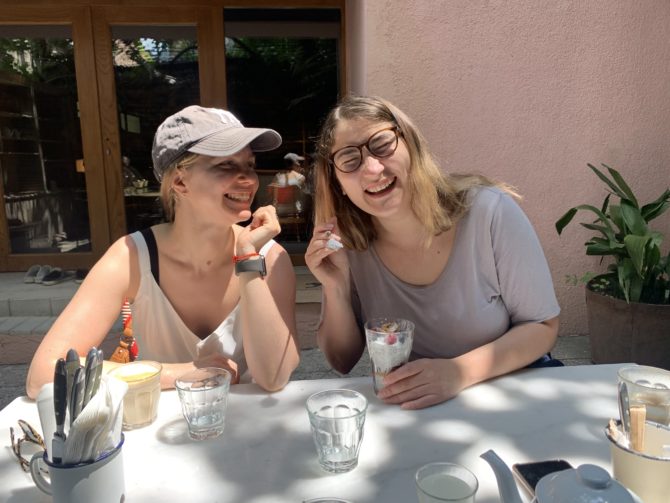
Before I start, I wanted to note that my great-uncle Leonard died suddenly a little over a week ago. He’s been a part of my life since I was born; indeed, one of the first photos I ever took was of Leonard, snapped from the vertically-challenged perspective of a five-year old. I will wait until the funeral to gather my thoughts and memories, but it’s a strange feeling to have someone disappear without warning. We’ll miss you.
“Let’s move to the UK!” I said. “We can go travelling all over Europe! Everything’s so close!” And for a hot minute this plan worked out great – we did make it to Amsterdam and Barcelona, after all – but then Covid happened, and after that we wanted to prioritise seeing old friends rather than exploring somewhere new. This is a long way of saying that it’s been a long time since Randi and I visited a new country together, but now the spell has been lifted after a long Easter weekend with Randi’s parents in a brand new destination for us all: Malta!


Malta is a fascinating place. It’s the smallest EU member state, by both size and population, and everyone we spoke to had a clear pride in their country. For a century and a half Malta was a British colony and some of that influence is obvious: English is one of two official languages, there are British-style plugs and red telephone boxes, Randi could order a ricotta qassata from a ‘Crystal Palace café’ and we even spotted a mysterious Clapham Junction on a map. Meanwhile, the country’s nearest neighbour is Italy – no doubt contributing to all of the delicious Italian food available – while the Maltese language itself is descended from Arabic, and when you’re walking from Mdina to Ir-Rabat it’s very easy to feel like you’re in the Middle East. To be honest, I already want to go back.
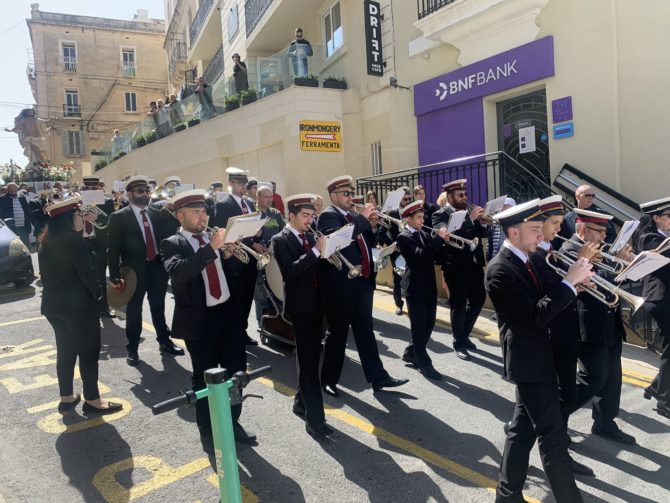

Valletta
Despite a late arrival, Randi and I forced ourselves to get up on Thursday morning for a walking tour of Valletta. Malta’s capital is very small, highly pedestrianised, immensely walkable and incredibly beautiful, with an impressive gorgeous-buildings-per-square-km ratio and photogenic streets which curve up and down before reaching the sea on three of the city’s four sides. Valletta was built as a walled city, established by the Catholic ‘Knights of St. John’ who ruled Malta from the sixteenth century until Napoleon’s invasion in 1798, and unlike most cities has a very clear ‘entrance’ over a bridge and through the no-longer-an-actual-gate ‘City Gate’.
Once inside, the first thing you’ll see is the new Maltese Parliament building – which was only completed in 2015 – built in a ‘controversially modern’ architectural style which Malta should be very grateful isn’t just a euphemism for ‘terrible’ but is actually quite striking. In fact, prior to its construction this plot of land was a car park, so this seems like a big improvement, and we were amused to spot a few designated car parking spaces which remain nearby, tucked away on a side street, reserved exclusively for the following named positions only: Prime Minister, Leader of the House, Opposition Leader, Minister for Family and Social Solidarity, and Parliamentary Secretary for Rights of Persons with Disabilities and Active Ageing.
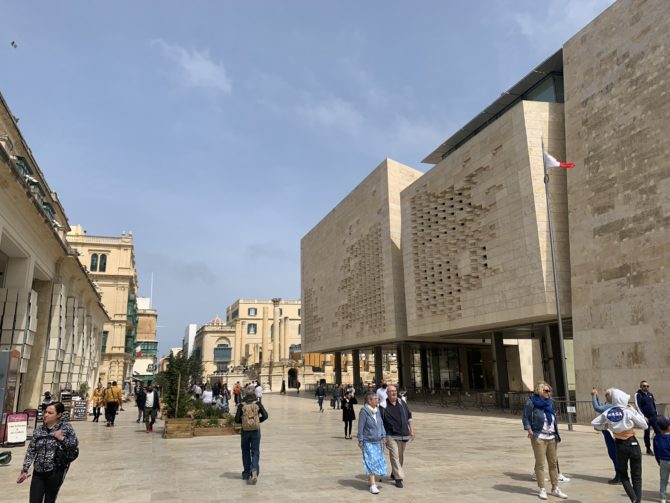
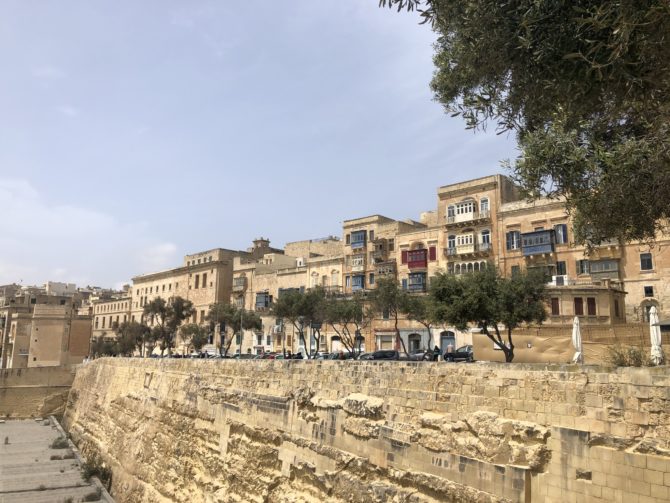
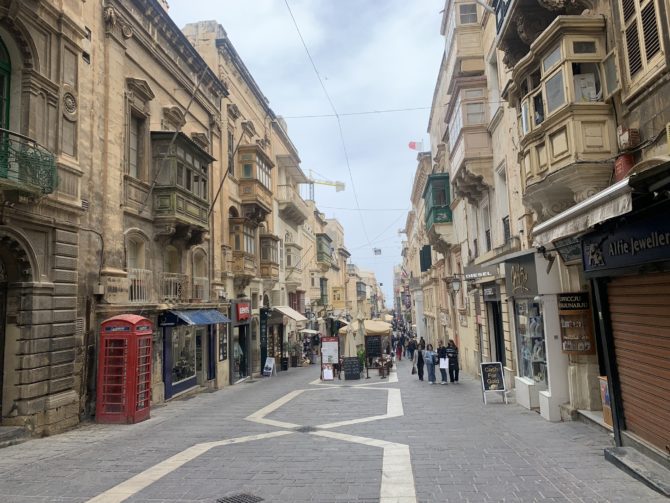
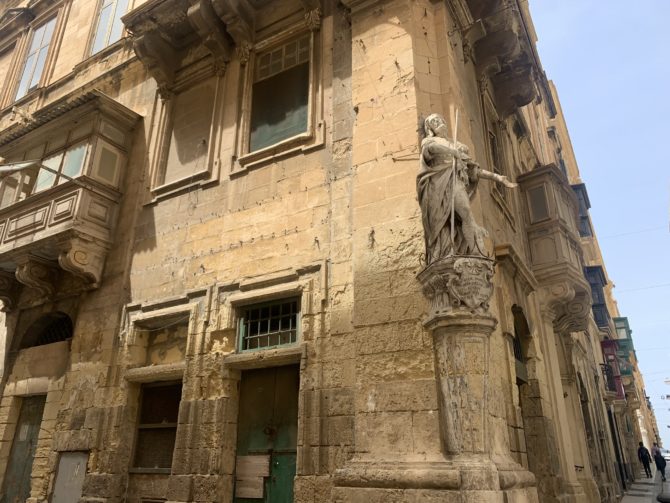
Valletta is also a hub for buses on the island, and since it’s only a half an hour from where we were staying in St. Julian’s we ended up coming back a few times – especially to eat! Special thanks to Lee and James at work for sharing their curated list of Valletta’s restaurants with me. We tried a few places, but in particular I have to mention the amazing tasting menu we enjoyed at Legligin on our final night as our farewell to Malta.
(Since I mentioned the buses, here’s the low-down: they were mostly very good, and easy for tourists as they accept contactless card, but the big downside came when a bus was ‘full’ and refused to let us on. We could have totally squeezed on.)
Gozo
On our second day we headed to the island of Gozo for a quad-biking tour around the main sights. As the non-driver of the group my role was mostly to not fall off the quad bike while Randi was driving – which I managed with a 100% success rate – and occasionally risk taking photos.


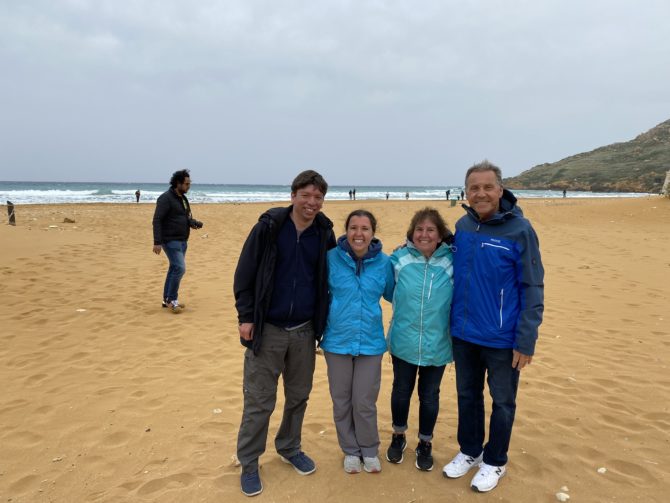

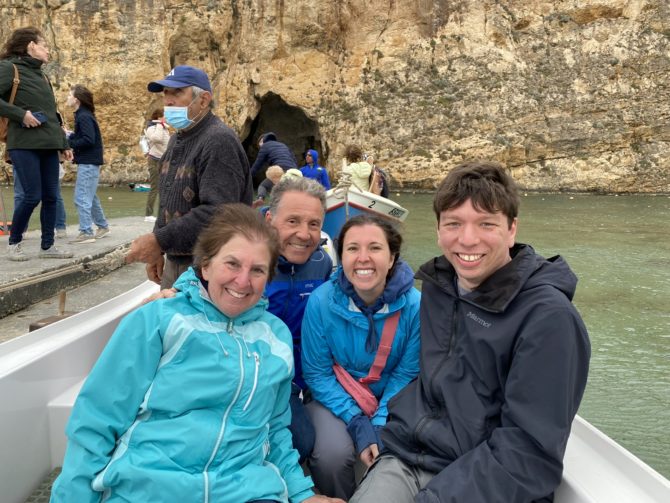
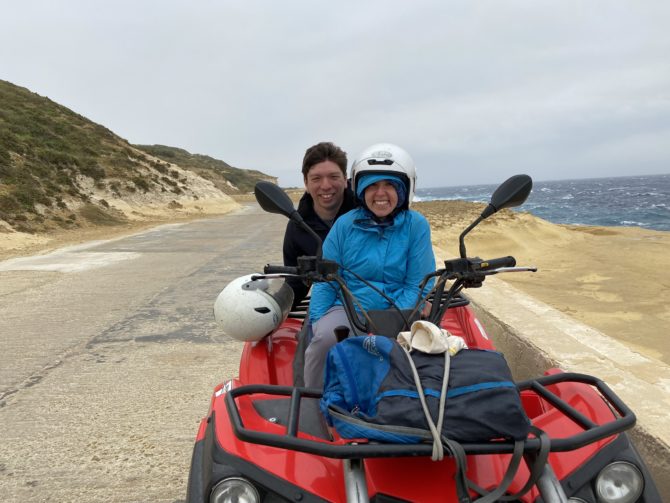
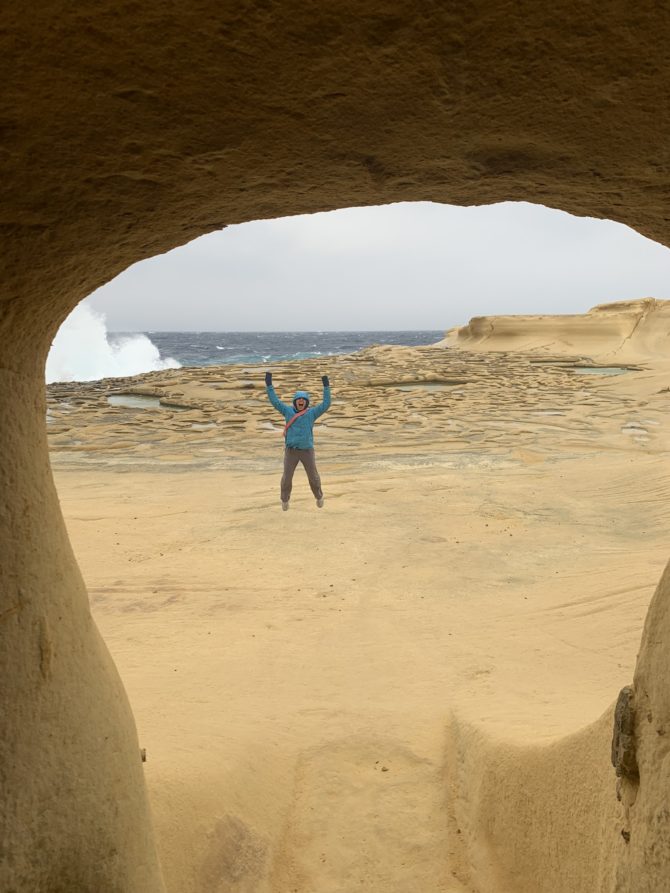


Mdina & Marsaxlokk
The two other places we visited during our trip were the fortified city of Mdina (Malta’s ancient capital city prior to the construction of Valletta) and the fishing village of Marsaxlokk. Mdina itself is teeny tiny and feels like a well-constructed film set, with a population of less than 300, although it’s surrounded by the larger town of Rabat. From here Randi and I tried and failed to go for a hike through the countryside, having been assured the the path was ‘obvious’, although it was not at all obvious to us where the path ended and the strawberry farms began. Still, we totally forgave everything because the landscape was like walking through a tabletop of Carcassonne tiles.
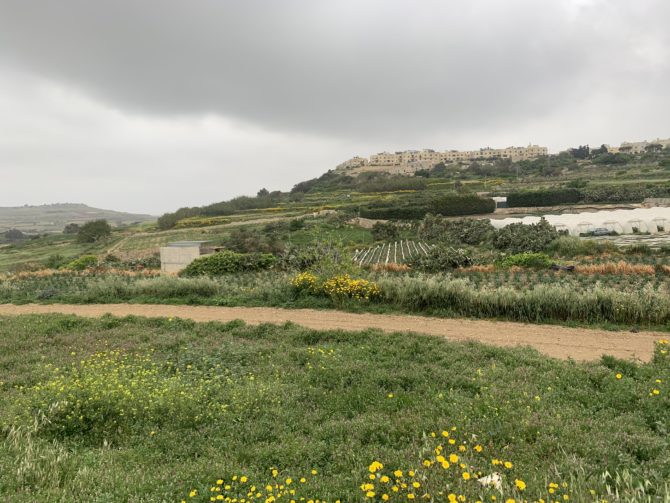
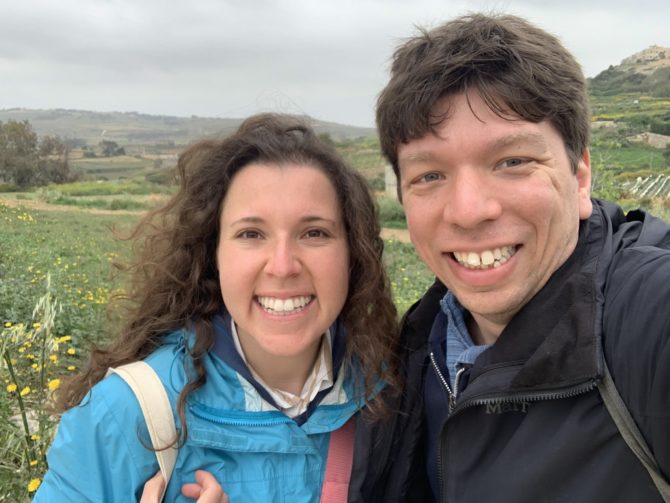
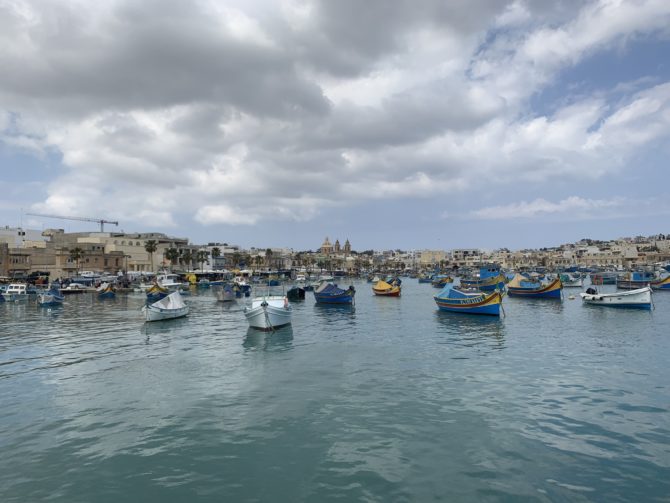
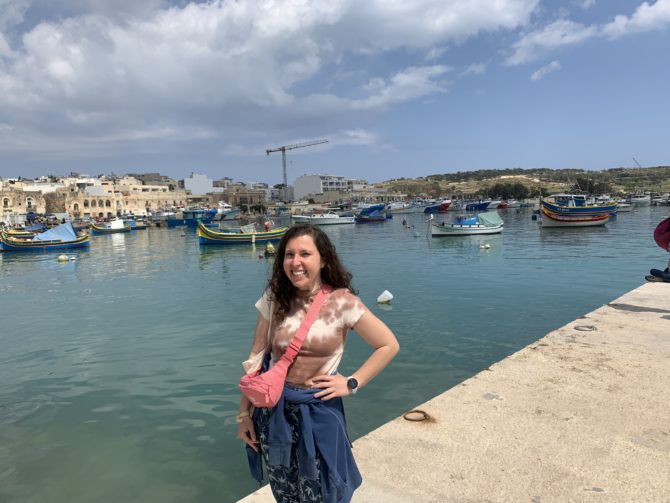
At 20.30, two and a half hours before Brexit, I bowed to the victory of the Brexiteers by sitting alone in a Wetherspoons pub and ordering British pie and British mash through the Wetherspoons app. (Thirty minutes later I realised I had ordered it to the wrong pub, but the staff kindly saved me from my own idiocy.)
At 22.00, one hour before Brexit, I was sitting on a plane with my seatbelt fastened, waiting to take off.
And by 23.00 I was safely in the air, somewhere over France…
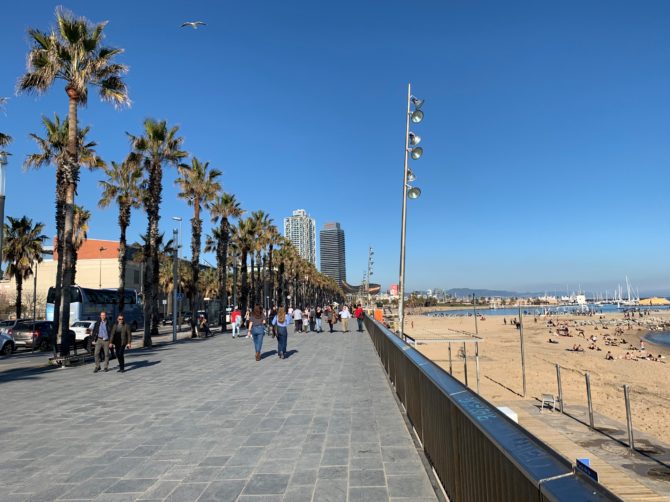
I’d love to pretend that this was all carefully planned, but it was just a happy coincidence that Randi was working in Barcelona last week and suggested I joined for the weekend. Obviously I was happy to do so, because (a) it’s Barcelona, but also (b) the city has always gotten a raw deal on this blog. I visited twice in 2003 – once on a school trip and then later with my family – but alas this was a year before I started blogging so it left an annoying hole on my virtual scratch map. Until now.

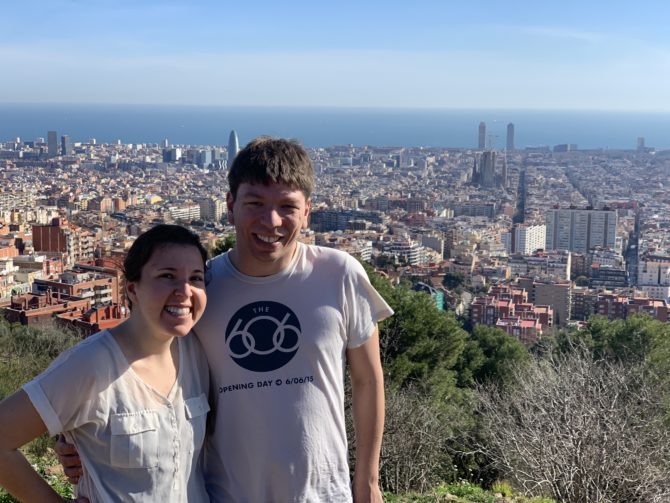
Since we had both been here before – albeit a while ago – we didn’t feel any pressure to rush around ticking off all the tourist sights. Instead we did a healthy amount of walking and wandering: eating tapas, marvelling at how different big cities can feel from each other (there are no houses!) and saying silly things to each other like “this reminds me of Buenos Aires”. I was also pleased to confirm that, after over a year of Duolingo, my Spanish is definitely in a better state than it was in 2003. And sure, nowadays I’m even more aware that you’d be wiser to speak Catalan here than Spanish, but I hope that the bar for British tourists is sufficiently low that I passed.
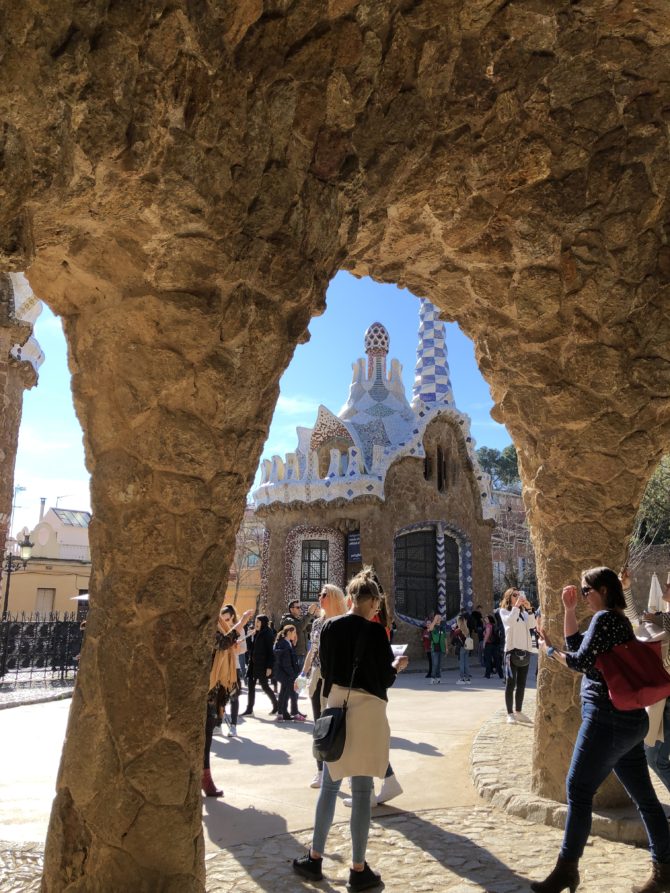
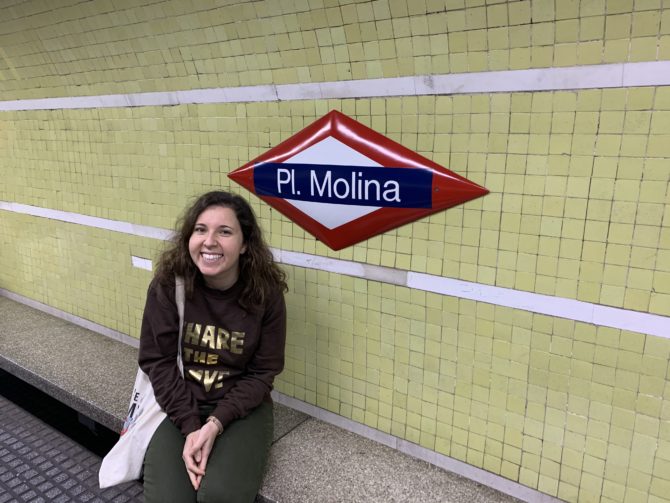
The one attraction we did pay for was the famous Park Güell which consists of a small ‘Monumental Zone’ of Gaudi sculptures and a much larger free area with rewarding views of the city, the sea and the mountains if you climb to the top. We sat up here for a while in the sun, basking in the warm glow of an unhurried weekend trip and the knowledge that Europe is still right here, just over the water, and it isn’t going anywhere.
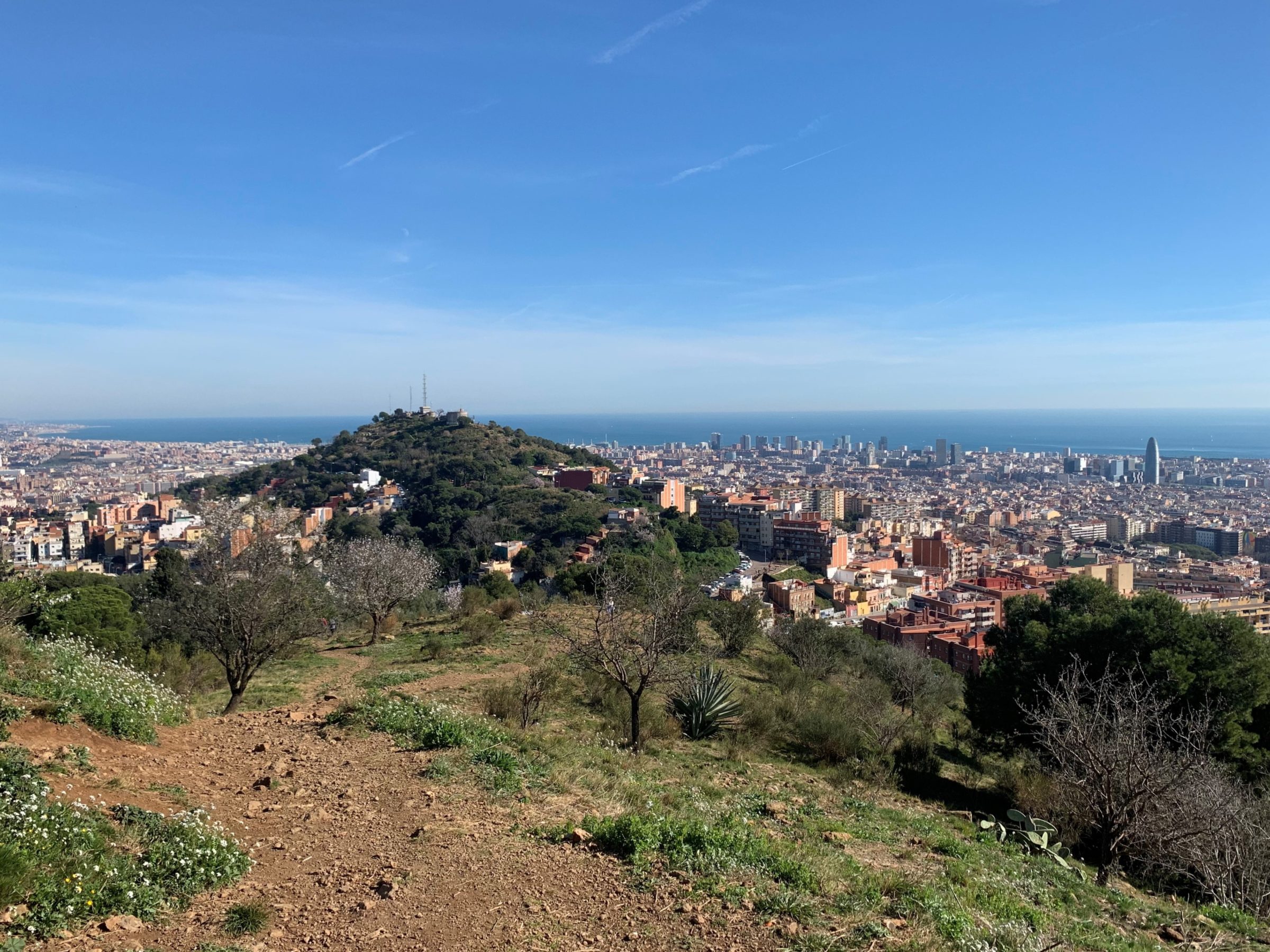
Last week, Katie and I supplemented our regular Doctor Who outing with the first episode of the new Picard series. It seems strange now but I didn’t discover Doctor Who properly until I was a teenager, while Star Trek was deeply woven into my childhood: my mum (the only one who knew how to program the VCR) would always make sure it was set to record if my dad and I weren’t going to be home to watch it live. It should be noted that my dad loved both The Next Generation and Deep Space Nine the best, but for almost opposite reasons. The former is a utopian fantasy of peace and flourishing, the latter exposes the darker underbelly at the fringe. One is a manifesto, the other is a reality check. Both series need each other, and play off against each other.
From a dramatic perspective, however, you can’t tell any interesting stories if all you have is peace and flourishing. That wasn’t a problem for The Next Generation because it was set on a spaceship exploring new life and new civilisations. As long as those civilisations were violent and warlike then you had yourself a plot. But Picard is set on Earth, so it can’t play the same cards. Instead, the first episode features the perils of celebrity, xenophobia and a manipulative media… all good elements for a high-budget science-fiction show, but they also makes it feel like a show set in a higher-tech vision of Future America rather than a genuinely bold and radical imagining of a different social order.
This isn’t a complaint – I enjoyed the first episode and I’ll try to watch more – and even if it wanted to, the makers of Picard couldn’t recreate the The Next Generation anymore than my mum could still program a VCR. It was just a strange feeling, that’s all, that the vision of the future from the past now feels so much further away than our newer imagined future.
As for visions which look backwards: last Thursday I saw Tom Stoppard’s new play Leopoldstadt with my mum and cousin Alix. I had never seen a Tom Stoppard play before but apparently he has a reputation and the official reason for inviting me to tag along was that I might be able to “help explain what I thought it meant” at the end.
Leopoldstadt tells the story of a wealthy Jewish family starting in early twentieth century Vienna. Some of the family members have converted to Christianity for social reasons although everybody is still very much culturally Jewish, and together they debate questions of assimilation vs. identity etc. One member of the family acknowledges that anti-semitism is still present but optimistically argues that “pogroms are a thing of the past” and things will only get better. The audience is supposed to feel haunted by the dramatic irony, I suppose. As staged, it just felt like a cheap trick.
I have a big mostly-Jewish family on one side, studied mostly-modern history at university and have seen an above-average number of plays. So maybe I’m not the target audience here. But I’m going to trust my instincts and just assert that this isn’t a very good play. The characters are given a huge amount of clunking historical exposition (the British Mandate in Palestine one moment, Bolshevik revolution the next) for no good reason, the plot is full of clichés and the script abounds with arched contemporary references to make the audience feel worthy and knowing. There are so many powerful and moving works about this topic, but this isn’t one of them.


